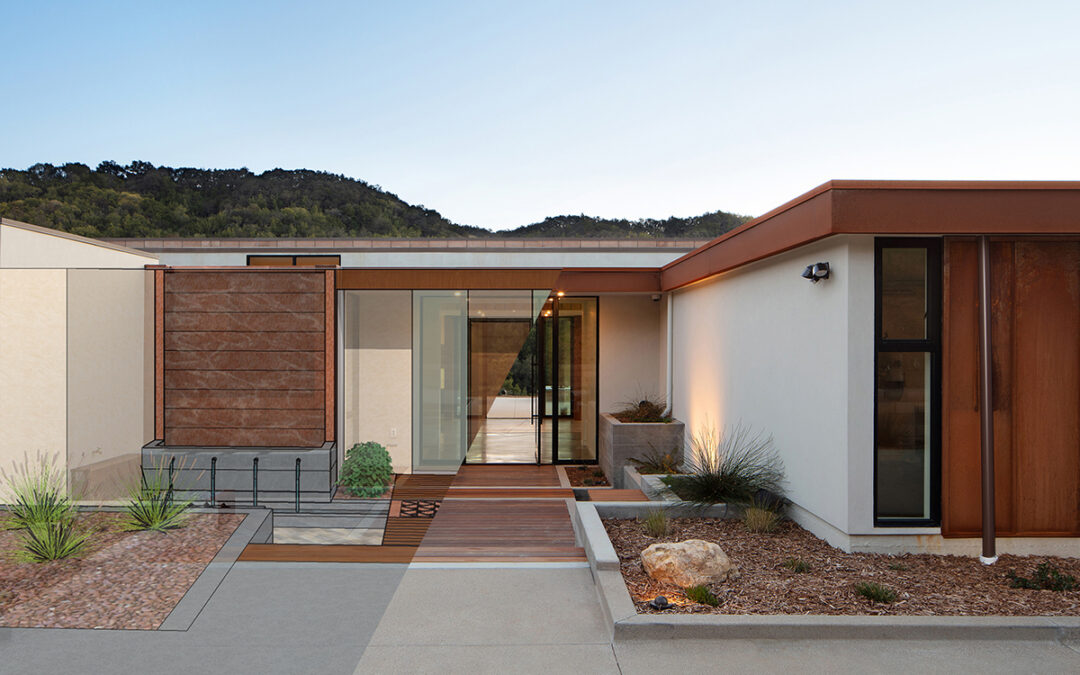
Jul 29, 2022
Top tips for a better investment and landscape, from design through construction
What is Design-Build Landscaping?
Design-Build landscaping is exactly how it sounds: one team provides both the design and installation of the landscape, rather than splitting those services between companies. Design-build landscaping is quite common and provides multiple benefits. Unfortunately, a homeowner or building owner will often hire a landscape contractor to install plants and irrigation without design. This is not the ideal scenario. As with any type of building, it is always best to begin with a design.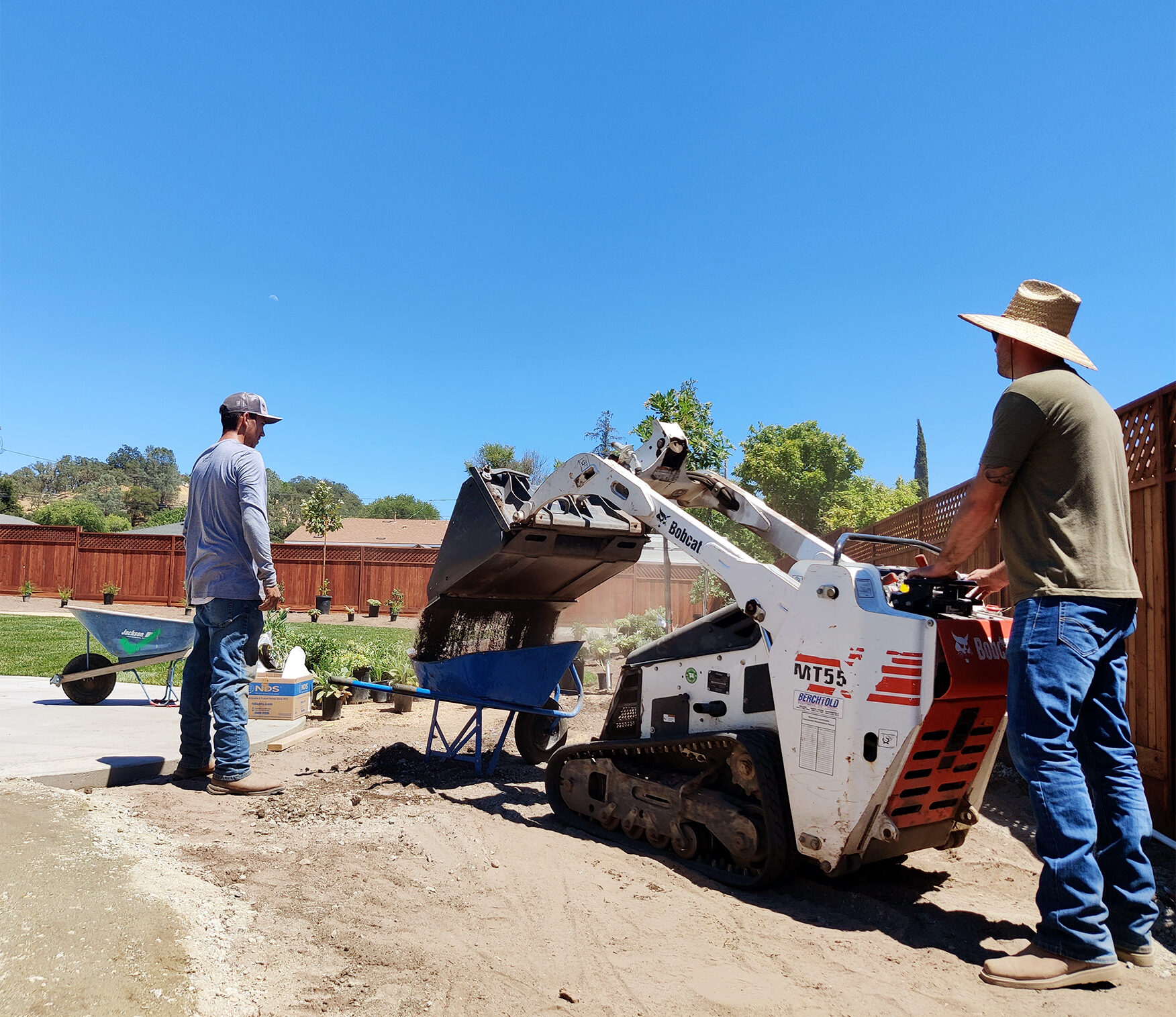
Why Design-Build?
When the same company performs both design and installation, their professionals work together often and can provide a more seamless delivery. The teamwork involved in the design-build process for landscape construction can add a lot of value to your finished landscape. Often an integration of architects, designers, engineers, and builders, the design-build process takes advantage of professional, licensed experts working together from concept to finished construction. The goal of this integrated process is to fulfill your priorities of landscape design and budget. At Madrone Landscape we believe strongly in the design-build process because the benefits are twofold: it allows us to do incredible work with and build great relationships with both our peers and our clients.
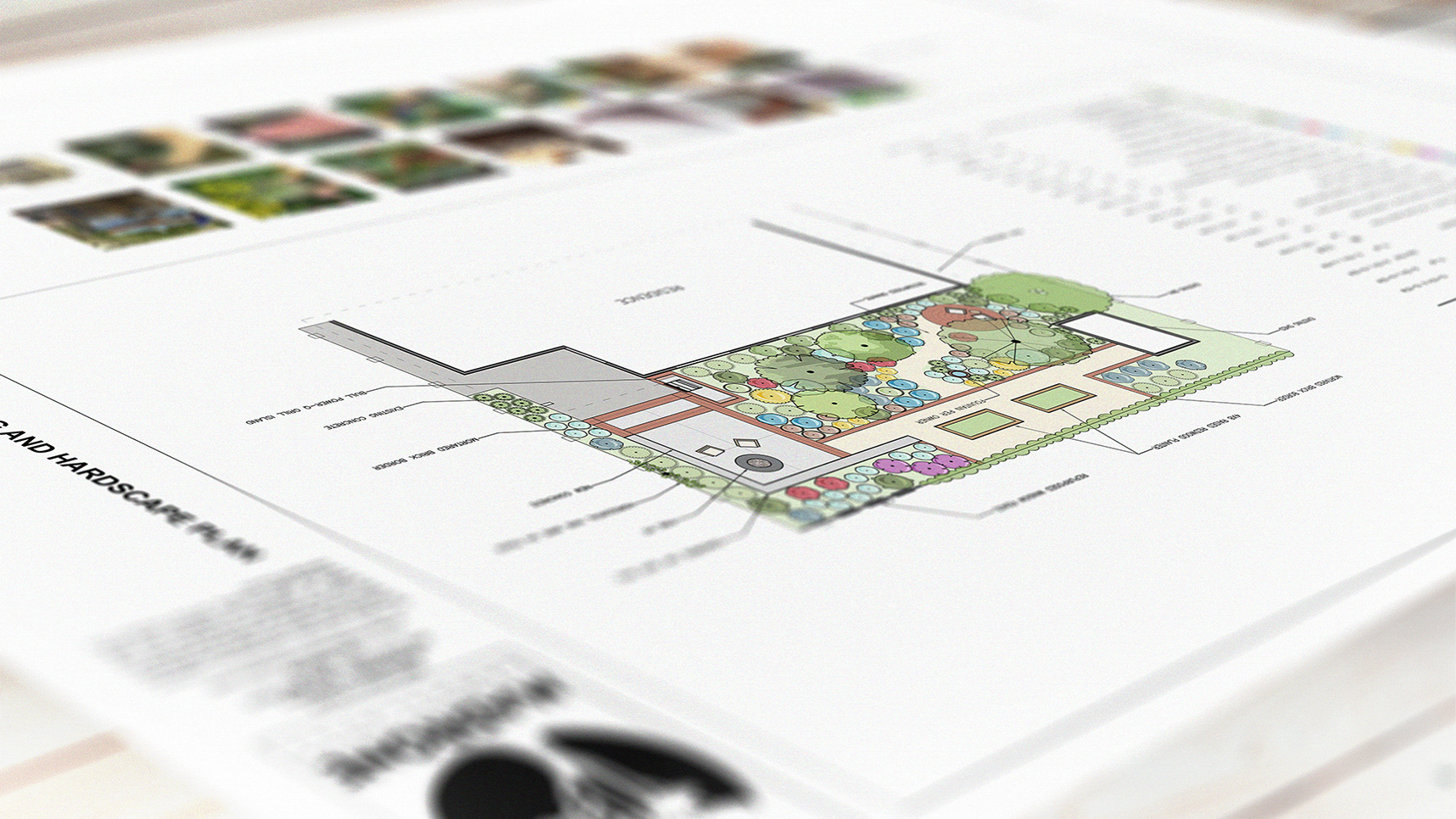
Design-Bid-Build vs. Design-Build: What are the Differences?
Design-Bid-Build: The design-bid-build process is common in the construction industry for clients who want separate design and construction firms. A landscape designer will provide plans for you, and then you will ask contractors to bid the plans. The design can go quickly if there are no cost limitations discussed. Once the contractors provide their costs to install the project, you may be shocked to see how much it will cost to build. This is when you or the contractor decides how to change the design to fit within the construction budget (this process is called value engineering, where items are removed from a plan or less expensive options are chosen to reduce overall cost). You may also go back to the landscape designer to re-design (typically for an extra fee). In design-bid-build, you select a contractor based on the bid price. It then becomes your responsibility to orchestrate all of the design and construction activities – including introducing the contractor to the designer.
Design-Build: At Madrone Landscape, we specialize in the design-build process. Our landscape architect and designers not only help you with the initial design, they also help navigate any obstacles encountered during construction. We provide construction cost estimates during the design process (for more information, see our design page). This usually adds time to the overall design time, for good reason. Knowing construction costs during the design process allows you to make decisions on where to spend money and keeps the plan within the desired budget. A cost-informed design means the value engineering is done well before the project starts. The entire team will be working together with the landscape designer to make sure that there are few unforeseen lapses between designs or construction activities. For new construction, this will include your engineers, architects, and builders. For custom residential updates, your design-build team becomes your expert advocate through design and construction and we handle scheduling and coordination with all parties involved.
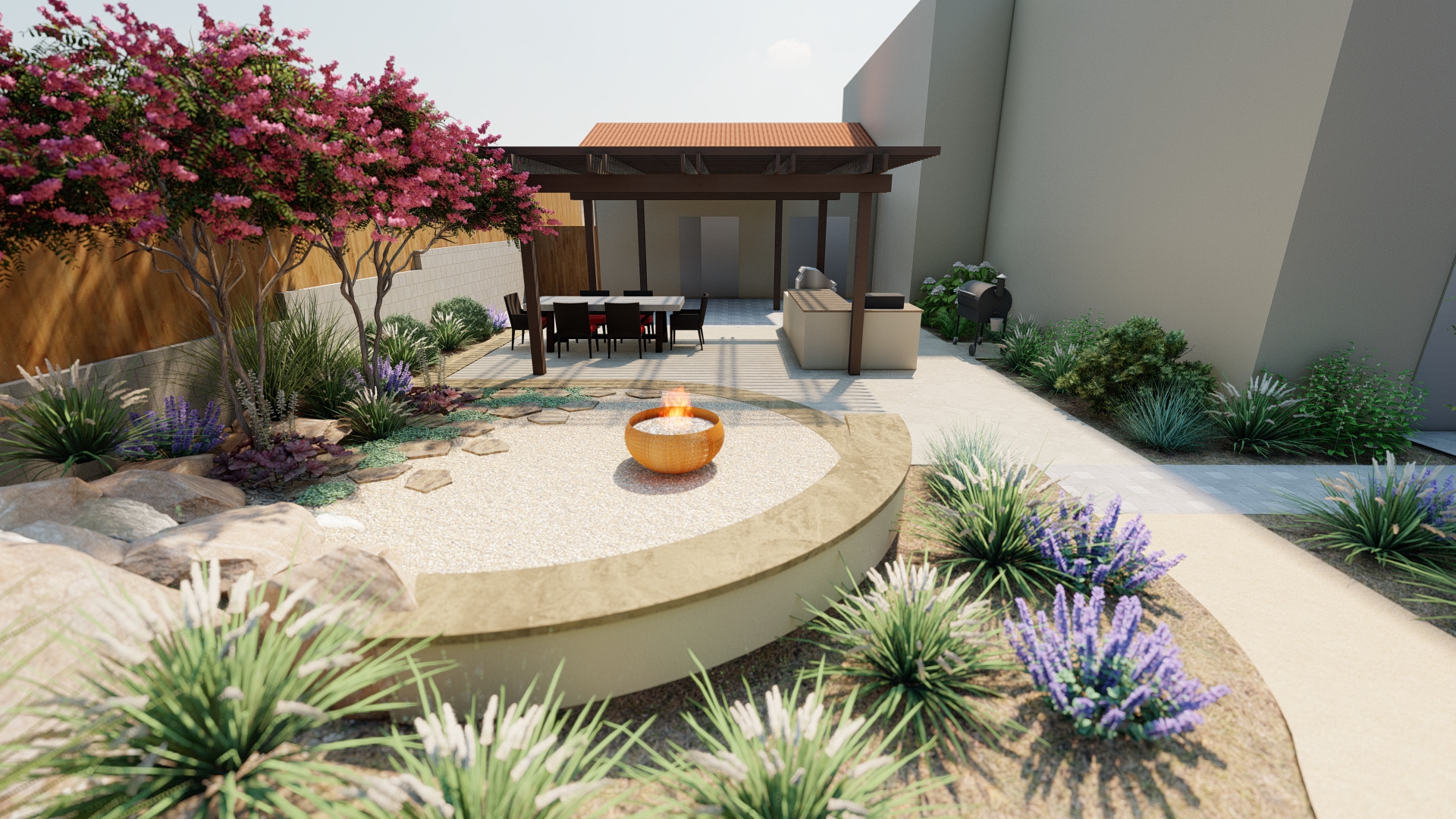
Five Tips When Choosing Design-Build Landscaping
1. Know what you need/want before you start.
Often, a client will come to us with a list of items they want designed into their landscape, such as a patio, wall, fountain, or pergola. What they may actually mean is that they need a shady place to entertain guests with pretty things to look at. While your spouse may want a fountain, he or she may appreciate boulders and flowers just as much. When you prioritize your goals before starting design, you can prevent being caught off guard during the design process. Design is almost always a team decision. If you and your family can align your wants and needs before the design starts, the design will turn out better and go more quickly.
2. Establish a construction budget.
Before starting the design process, establish a budget or range for what you intend to spend on construction, and share that information with your designer. This will help them design within range. Typically, the construction cost of landscapes is between 10 to 25 times the design fee, although this may vary.
3. Take your time with budget decisions.
During the beginning of the design process decisions are easy; we refer to this as the honeymoon period. You may find yourself saying, “I love that stone veneer, it looks just like the picture I saw on Houzz!” After construction costs are introduced, major design elements may be on the chopping block. Do you keep the outdoor kitchen, or the stone paving? Allow yourself time, so you don’t rush these decisions.
4. Trust your gut – and your landscape team.
Taking on a big project and the resulting investment of your funds will greatly affect your daily life. You need experts you can trust to help you achieve your goals. If you don’t have a level of trust with your landscape team, the relationship and project will not work. You need to feel comfortable giving them both positive and negative feedback, and they need to feel comfortable giving you good and bad news. Your designer will not only be helping you with the initial design, but also will be helping to navigate any obstacles encountered during construction.
5. Communicate often and clearly.
During design and construction, changes happen. To best facilitate these changes, we will ask a lot of questions to make sure we are designing efficiently. Whether you would like to give us artistic license on decisions, or you have particular opinions that need to be known, it is important you communicate your preferences clearly.
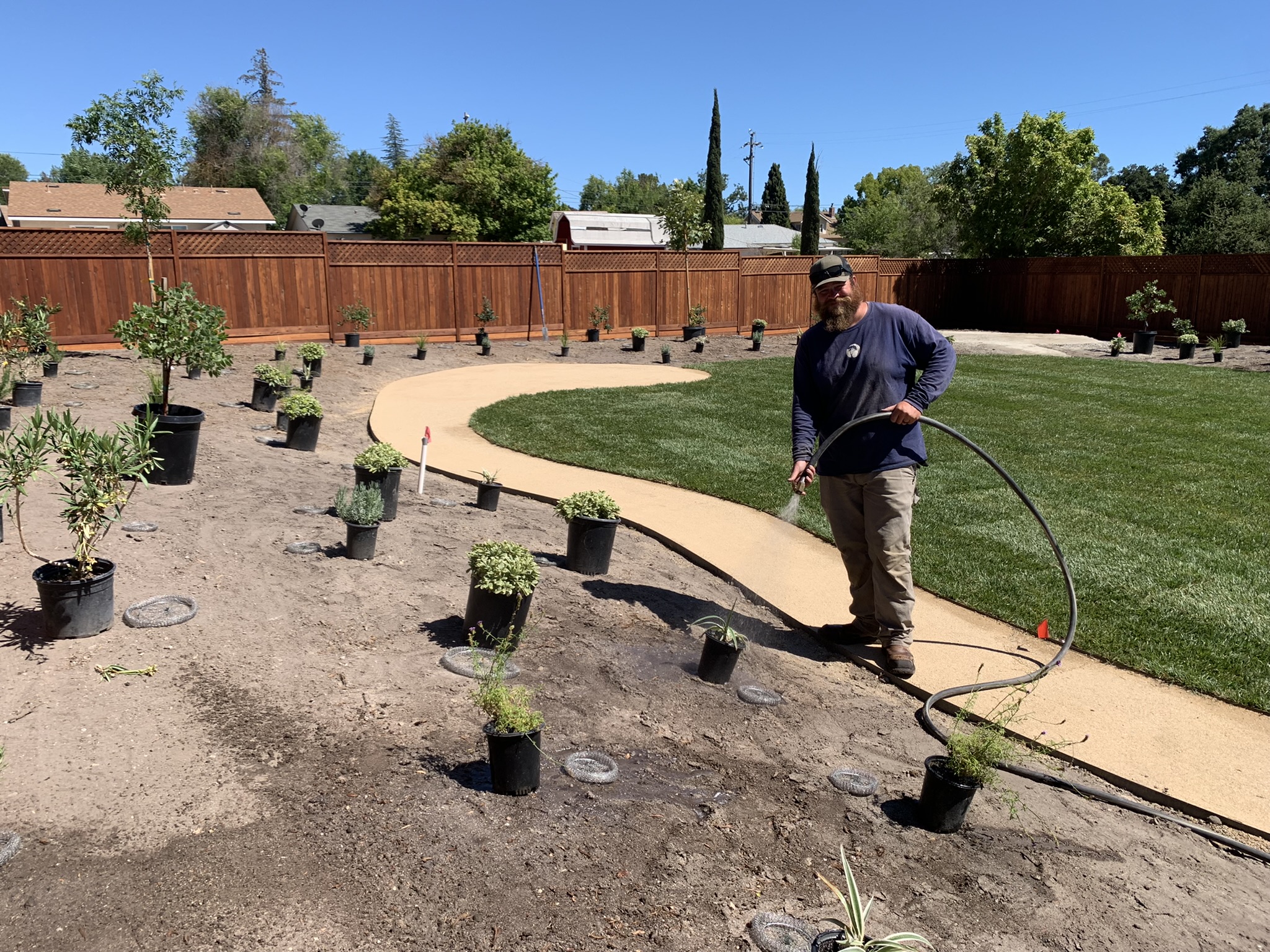
A Better Investment and Landscape
It’s our experience that the design-build process produces a better product with stronger teamwork and a healthy working relationship. The process takes time to do well. Expect two to six months of design before construction for custom residential updates, and often longer for new home or new commercial construction. Being well prepared can shorten this time frame. If you have new construction, you should consider hiring your landscape architect at the same time that you hire an architect. We strongly believe that the design-build relationship you foster with us will make you feel good about the investment and the landscape you create.
Do you have additional questions about the design-build process and its benefits? Email us at [email protected] or give us a call at 805-466-6263.
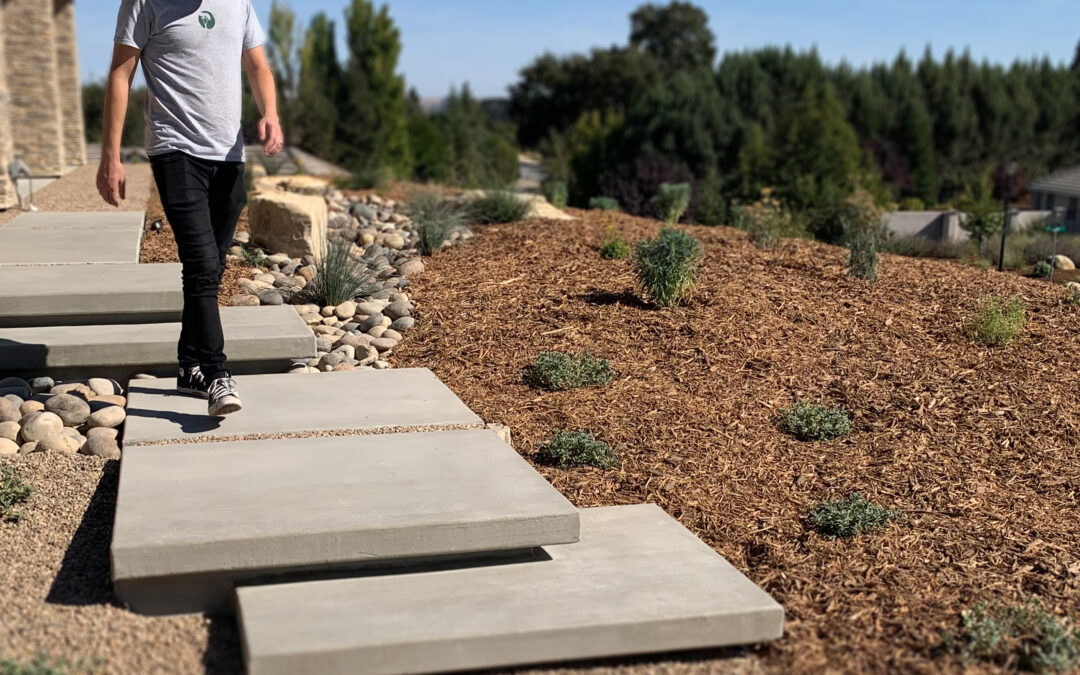
Jun 30, 2022
Navigating a multidisciplinary project or need plans for submittal? Our landscape architectural services may be what you need, here are some FAQ’s about our services:
Committing to a new landscape or landscape overhaul for your home can be daunting. Especially if you haven’t done a remodel project before, there can be a lot of unknowns when taking on this type of home improvement project.
Our landscape architects and designers do their best to guide clients through every step – making it as seamless, painless, and stress-free as possible. Every project is different and has its own unique variables, but the basic questions we are asked most at the beginning of the landscape process are often the same.
Have more questions? Review our design services or contact our landscape architecture office, [email protected] or (805) 466-6263.
What types of plans does Madrone provide?
Madrone provides demolition, planting, hardscape, irrigation, lighting, utility, grading and drainage plans. We also provide construction details for all of the aforementioned plans and specifications depending on the project needs.
We are building a new home and new landscape. When should we bring in the landscape architect?
For new construction projects, you can count on landscaping as the final step. Planned correctly, landscape installation can begin during the final construction stages. Talk to landscape architects and builders from the get-go so that they can get you on their schedule.
Sometimes landscape architects and designers work concurrently with architects and civil engineers on landscape plans, but your designer will need a finalized site plan with building footprint and finished grading to work from.
TIP: Be sure that your general contractor helps plan for landscaping by adding sleeving underneath any concrete or asphalt for future irrigation pipe.
We are thinking of updating our landscape. How far ahead should we plan?
Landscape construction crews can book out anywhere from 2-6 months in advance, so make sure to get on your builder’s radar early. This is one major benefit of working with design/build companies like Madrone.
TIP: The best time to plant in our California Central Coast region is the fall so that root systems can develop over the winter months.
Will we need permits for our landscape construction?
Check with your local municipality to find out if you need any permits for your landscape. Shade structures that are attached to your home or are built within a certain proximity to your home may need to be permitted. There may be water usage allowances for irrigation, and permits are often required for graywater irrigation systems. Permit filings can take 6+ weeks to be processed once received.
Does Madrone create master plans for estates?
One of our strengths is estate landscape architecture. We have a long history with winery tasting room design, commercial design, residential estate design, and complex hardscape design. Every property owner has different goals and lifestyles and we have seen it all. We focus on circulation, usage, and function to design vehicular access, walkways, outbuildings, event areas, patios, kitchens, pergolas, fireplaces, fountains, walls, fountains, and more. In addition, we have decades of construction experience in concert with most construction trades. This allows us to make master plans that involve intelligent phasing, budget analysis, and permit strategizing. We have a network of architects and engineers to fulfill additional design needs for estate-level planning and development.
What is the design process and how long does it typically take?
The design process is the time that you, the client, spend with a landscape architect or designer on the conceptual vision of your outdoor space. Most landscape designs can be completed from start to finish within 3-6 months, while others can take up to a full calendar year.
Every designer or firm has a unique process, but generally will start with visiting your site and asking questions about your needs. The length of time spent on design will vary based on size of project, number of built elements, complexity of site constraints, and the number of changes made during the process. If a design isn’t agreed on at the first or second draft, more revisions may be necessary.
Once the designer has developed an understanding of your project, they will create an overall layout on paper, then gradually start to specify treatments, finishes and building techniques as ideas are approved.
At the end of the process, the owner will receive a complete set of construction documents which will serve as a tool for estimating construction cost and to ultimately guide the landscape installation.
How much does a landscape cost? What are the variables?
The cost of a new installed landscape can vary widely. Just like designing a house, with all things being equal, it will cost more to design a large area than a small one. The price then increases depending on how many built elements you want to include and the types of materials you choose.
Click here for a basic outline of some of defining elements that will ultimately determine the cost of your landscape design and installation.
What is the turnaround time for Madrone for landscape plans for a simple commercial submittal?
In addition to custom hardscape plans, we also often provide simple planting and irrigation plans for architects around the state. These tend to be simpler plantings with more complicated irrigation systems and calculations. Our team can typically turn these around in a couple weeks from being provided a civil AutoCAD file and we pride ourselves on making deadlines early.
What is the difference between landscape architects and landscape designers?
Landscape designers require no certifications and generally focus on small scale residential planting plans. Landscape architects are licensed by the state (of California) and undergo rigorous testing for certification. In addition to basic residential design, landscape architects handle commercial and public projects generally interfacing with other design professionals such as architects and engineers (civil, structural and soils). Landscape architects specialize in complex structural changes to properties and provide plans for demolition, hardscape, irrigation, lighting, utilities, grading, drainage, construction details, and specification. Landscape architects can stamp and take lead for plan submittals. At Madrone, we have both landscape designers and landscape architects on staff and can handle a wide range of projects in a collaborative environment ensuring high standards on each project.
How much information/direction does a designer need from the client?
The more information you can share up front with your designer, the more likely they will be able to design an incredible landscape that reflects your personal flair while including your desired or required elements. We love hearing about what styles and elements you do and don’t like so we know what direction to start with on your design. Browsing Pinterest and Houzz boards can be super helpful for this.
On the flipside, there’s also no shame in not knowing what you want—that’s what we’re here for!
Whether you know exactly what you’re looking for or not, the most helpful thing you can do throughout the design process is provide your feedback. We try very hard to customize each design project to the personality and needs of each client, so when we go through our concept and revision meetings, we want to hear what you really think. Honest feedback during our meetings is the best way to help us give you the design you’ve been dreaming of!
How do we decide what to include in our landscape design?
There are two interconnecting pieces to consider: landscape design area and desired landscape features or amenities. For instance, if you are looking to include a veggie garden, new patio, pergola, hot tub, flower garden, and meandering paths, you’re going to need a relatively extensive landscape design area.
Often in design, we encourage creating a landscape master plan. If it makes most sense financially to proceed with construction in steps, a sitewide design will ensure a functional and cohesive final design and finished project. Even if you envision installing the veggie beds at a later phase, it makes sense to design their location, orientation, and aesthetic or “design language” from the start.
As far as design features go, it may help to draw up a list of your desired elements before an initial consultation. You can discuss these items with the designer and see if any other ideas arise out of the design process. Browsing inspiration online on places such as Houzz or Pinterest, flipping through design books and magazines, or taking a walk around your neighborhood are also great ways to pinpoint your list of features and amenities.
At what point will we know how much our desired landscape costs?
Our design process includes using cost information as a tool to help guide design decisions. Once we’ve established our initial concept plan, our next step is to revise and refine the landscape plan and provide the client with budgetary installation prices. This estimate includes individual line item descriptions, quantities, and costs for every element of the project. This means you can see clearly where every dollar is being spent, and where there are opportunities to substitute materials or methods with less expensive alternatives without sacrificing functionality.
How do we determine what plants to include in our landscape?
To determine the plants for your landscape, also known as the plant palette, your designer will ask questions of style—Mediterranean, modern, xeric, Spanish, something else. During our design process, you will have opportunity to discuss planting selections, ask questions, and provide feedback.
Our designers are familiar with plant species that work well in the Central Coast, from Arroyo Grande through Paso Robles to Grover Beach through Cayucos and beyond. Each area has its own set of microclimates—unique characteristics including sun patterns, wind, humidity, shade, and more, that determine a plant’s suitability. Regardless of where the project is within our region, we strive to propose appropriate plantings that will use minimal water throughout the year, thereby promoting water conservation.
Don’t have a green thumb? That’s not a problem! Let our designers know, and they will be sure to propose the most low-maintenance options.
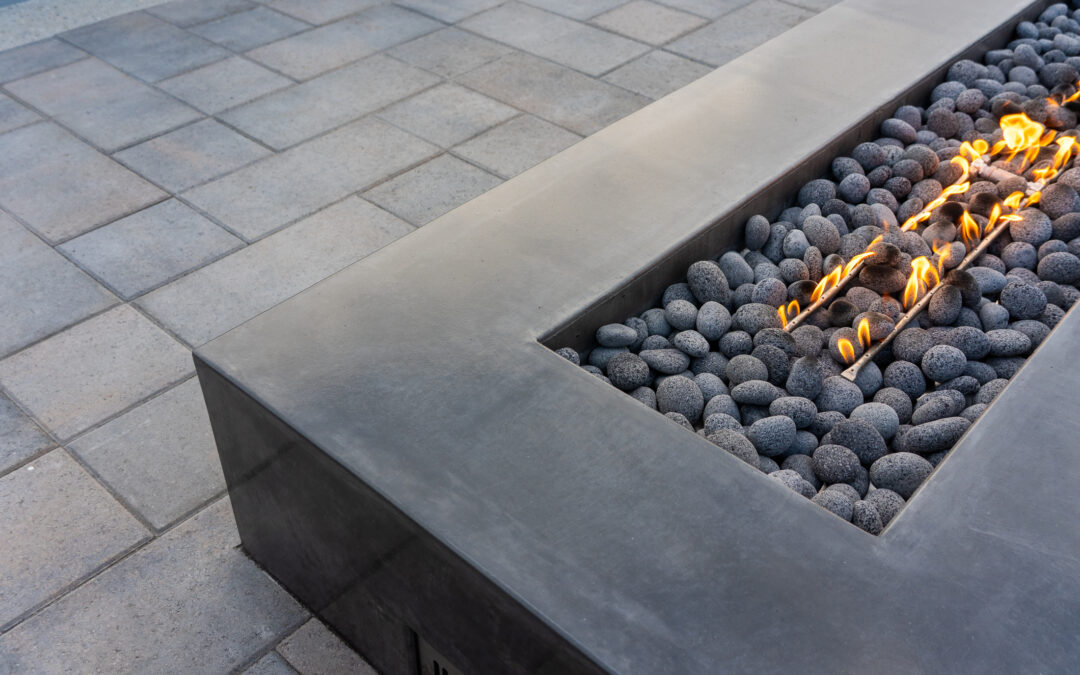
Mar 5, 2025
Developing Custom Landscape Projects
Are you looking for some modern landscape inspiration? In design build projects from Paso Robles and Cayucos to San Luis Obispo and Arroyo Grande, our team has developed custom landscape experiences for dozens of unique projects. In hilltop projects, suburban yards, and coastline sites alike, our designers have channeled the modern aesthetic and our construction teams have knocked it out, time and again!
Concrete Fire Feature
This large rectangular fire feature establishes a clean and simple statement piece in the middle of a wide paver patio at the Shoreline Inn in Cayucos.
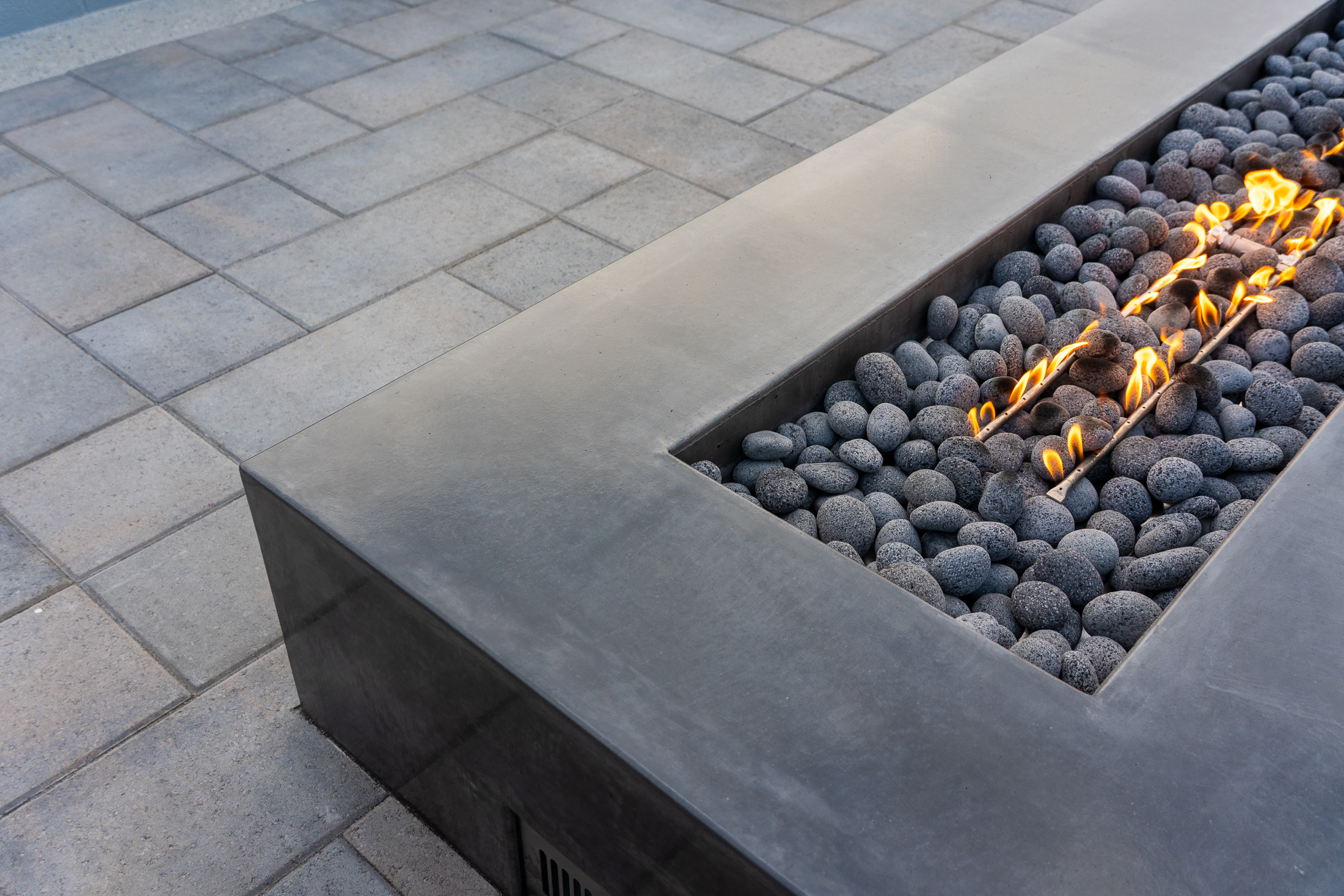
Segmented Concrete
A stepping broom-finish concrete pathway at this San Luis Obispo residence lend the design a simple and modern aesthetic. The walkway traverses decomposed granite, a sweeping synthetic turf lawn, and a planter area, leading to a seating nook separate from the main patio and hot tub deck. Composite decking, rows of ornamental grasses, and a simple but lush shrub palette all coincide to create a strong modern aesthetic.
Pops of Color
This project in Edna Valley incorporates a bright palette of flowering planting over a subdued monochrome hardscape palette. Yellow Achillea millefolium and pink Calandrinia spectabilis offer long-lived color during the summer months, while a sweeping synthetic turf lawn in the background offers year-round vibrance and verdance.
Long Rows of Trees & Shrubs
Especially in long narrow planters or layered shrub zones, straight lines of consisten plantings offer the most modern and clean visual appeal. Boxwood hedges can create a solid mass of green, flowering species can create strong seasonal interest.
Masses of Ornamental Grasses
Large masses or swathes of ornamental grasses are a simple yet surefire method to create the modern design aesthetic. Various grasses can be used in our mediterranean climate, including species of Muhlenbergia, Bouteloua, Carex, Lomandra, and Pennisetum. All these grass and grass-like options will shine in large groups, especially when paired with a large architectural shrub or tree.
Simple & Seamless Geometry
Sweeping curves intersecting with organized orthogonal lines go a long way in creating a modern aesthetic. Hardscape elements, boulders, rock mulches, cobble, seat walls, retaining walls, and more can be organized in a pleasing layout that accentuates a modern style.
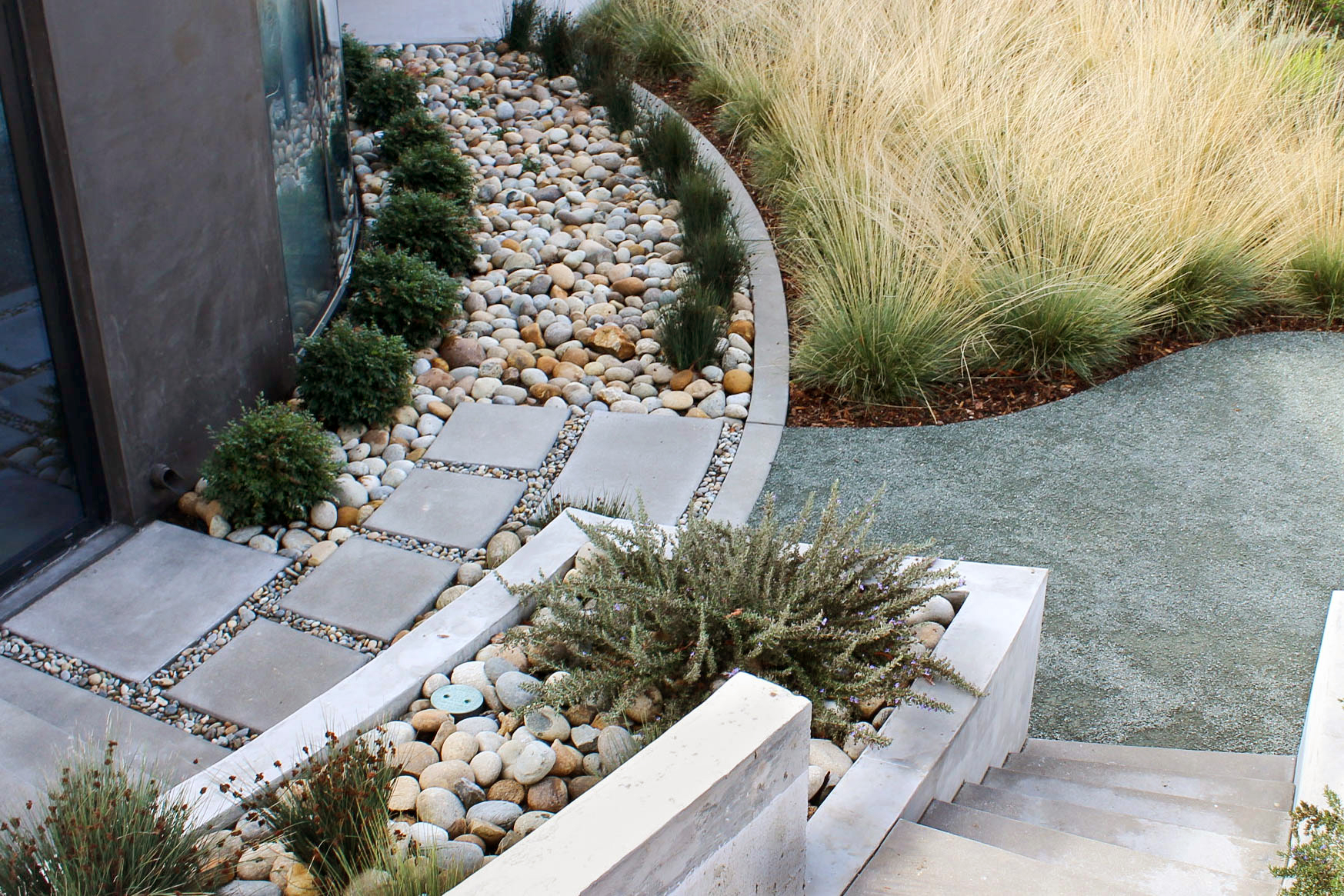
Committing to a new landscape or landscape overhaul for your home can be daunting. Madrone offers comprehensive landscape planning and construction administration including concept plans, design development, and construction documents. We work for architects, homeowners, developers, and general contractors to develop timely and accurate plan sets. Our landscape architects and designers do their best to guide clients through every step, and we bring years of experience to each unique scenario. If you’re looking for a brand new modern landscape design, or just need to freshen up the front yard, give us a call!
Review our design services or contact our landscape architecture office, [email protected] or (805) 466-6263.
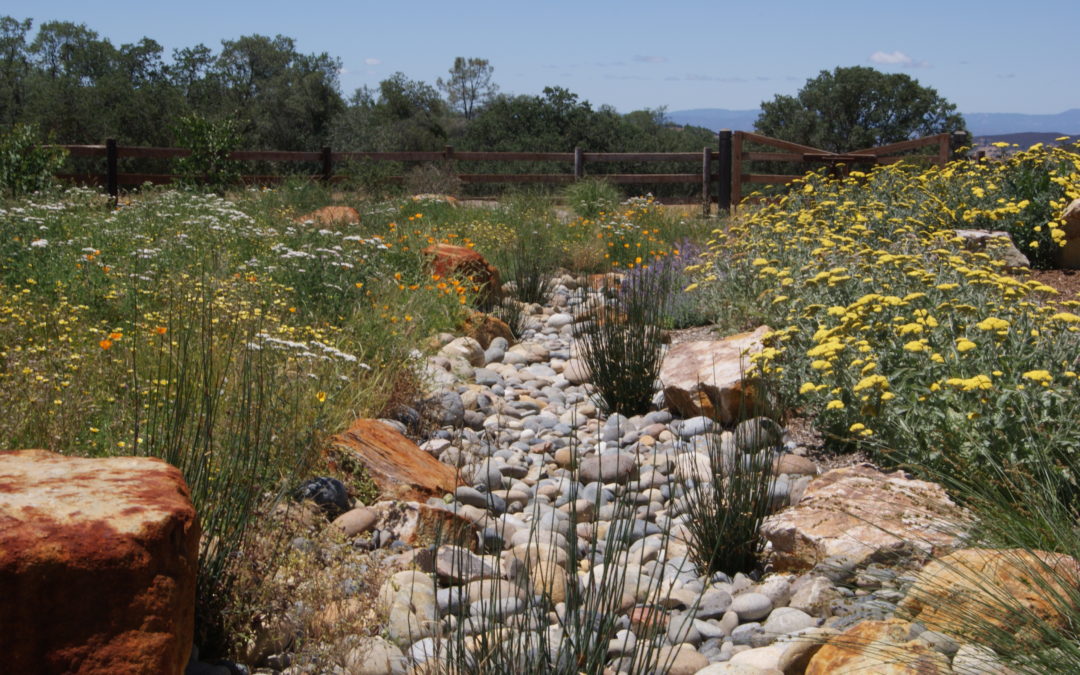
May 13, 2024
As Californians, we know that every drop we get is precious. Mindful water use as well as saving water costs can feel difficult, but one way to go about it is through capturing and using rainwater. Not only is rainwater free, it is 100% soft, free of salts, minerals, and chemicals, slightly acidic and a natural source of nitrogen—all beneficial for the plants in any landscape. To harvest and utilize rainwater, owners and landscapers can use a number of techniques.
Bioswales and Detention Basins
A beautiful way to maximize the effect of rainfall is through passive techniques, which more effectively reach deep-rooted plants such as trees. Bioswales and detention basins are a common approach that allow for deeper infiltration in specific zones of the landscape by capturing roof water and stormwater. Keeping water on site reduces runoff and erosion downstream from your property.
Bioswales can be beautiful additions to the landscape if made to look like a natural creek or pond with rocks and plants. Concealed detention basins can serve the same benefit through underground gravel leach fields around tree groves.
For the 3,000 square foot home, you can get almost 500 gallons from downspouts with a light ¼” rainstorm. Even in a drought winter, your trees can get a good deep watering.
Rainwater Cisterns
The most efficient way to harvest rainwater is to collect it from roof surfaces by piping downspouts into a cistern system. With a properly designed rainwater harvesting system, you can transfer nearly 100% of the rainwater that hits your roof into storage.
For every 1” of rainfall, you can capture 0.62 gallons of water per square foot. This means that a home with a 3,000 square foot roof will collect 1,870 gallons from 1” of rain. With an average annual rainfall of 19” in San Luis Obispo and 13” in Paso Robles, that same home has the potential to collect between 24,000 and 37,000 gallons over one winter. Once stored, the rainwater can be filtered and pumped into an irrigation system to supplement the water supply during the dry season.
Options and Costs
One major constraint for rainwater harvesting systems is the cost. In California, most of the rain comes during our short winter season, with little need for irrigation between storms. To maximize the harvest, you need to have a lot of storage for the water. Above-ground tanks are the most common was to store collected rainwater. These come in many designs and options, with plastic being the least expensive material. Collected water can also be stored in a holding pond, but this method allows for water loss to evaporation.
To have a system installed with a storage capacity between 5,000 and 40,000 gallons, you can expect to pay between $2 and $5 per gallon for overall cost installed by a qualified contractor. If a full system isn’t in the budget, you can keep costs low and use simple rain barrels to harvest water from downspouts. You can use collected water for indoor plants or landscape areas that don’t get direct rainfall.
When to Plan
With all of the different ways to think about harvesting rainwater, planning is key. Think about your system now, during the wet season. That way, you can have your system designed and installed during the dry season to prepare for the following year’s rain. We recommend 3–8 months to allow for design and installation without rushing decisions. When June comes around, rain may be the last thing on your mind—just remember watching that precious rainwater running down the drain and plan, plan, plan!
At any time of the year, consult with your landscape designer. If you are already working on a landscape plan, be sure to consider your rainwater harvesting system. It can be designed alongside planting and irrigation designs to allow your contractor to take care of everything at once.
Want to learn more about including bioswales or dry creeks in your landscape design? Contact our team at [email protected] or (805) 466-6263.
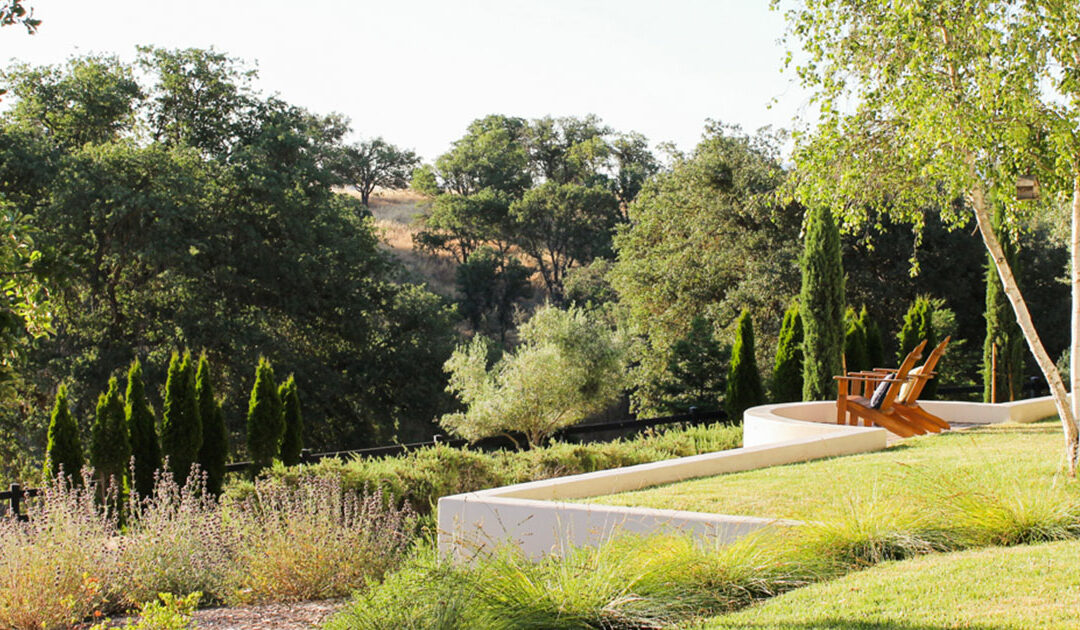
Apr 10, 2024
Bring the Mediterranean Magic to Your Central Coast Landscape This Spring!
Spring has sprung on the Central Coast, and with it comes the urge to refresh and revitalize your outdoor space. Here at Madrone Landscape, we understand your desire to create a beautiful and flourishing California haven.
Did you know that our region shares a unique climate with several other parts of the world? This “Mediterranean climate,” characterized by mild, wet winters and warm, dry summers, is found in California, Central Chile, the Mediterranean Basin, South Africa’s Cape Region, and Southwestern Australia. This common thread opens a door to a world of stunning plant possibilities for your Central Coast garden.
Why Consider Mediterranean Plants?
- Climate-Smart: Plants from these regions are naturally adapted to thrive in conditions similar to ours, requiring less maintenance and water.
- Year-Round Beauty: Many Mediterranean plants boast vibrant flowers and attractive foliage, extending the visual interest of your landscape throughout the year.
- Unique Selection: Explore a diverse range of plants beyond the typical California natives, adding a touch of the exotic to your garden.
5 Eye-Catching Mediterranean Plants for Your Spring Landscape
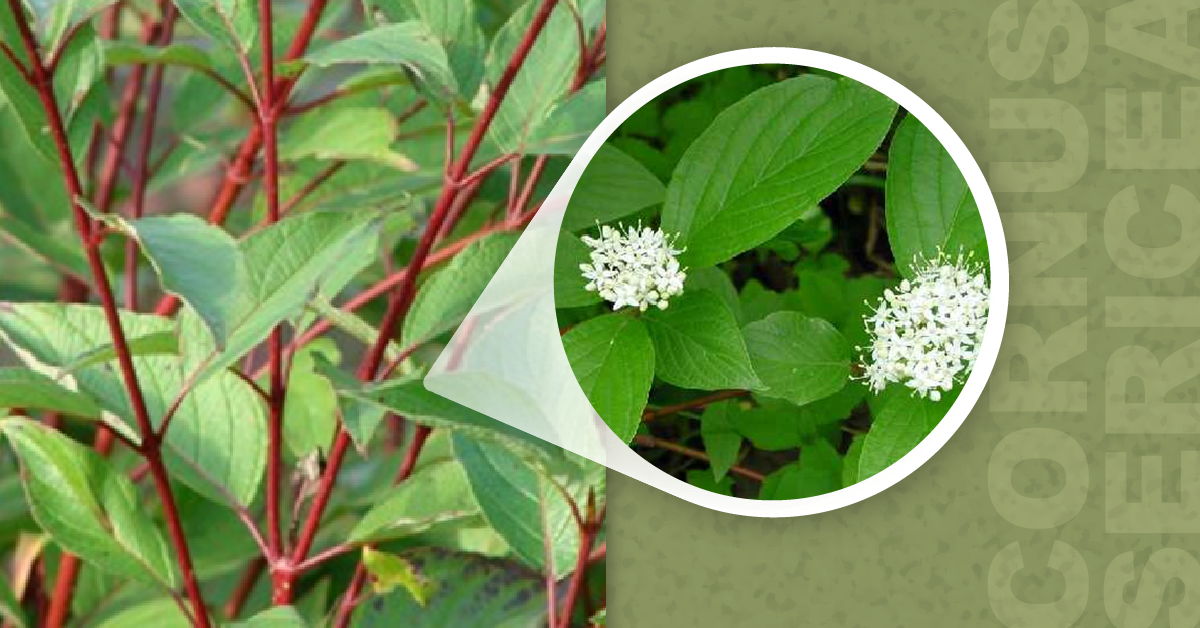
1. California Native Cornus sericea (Creek Dogwood)
- Eye-catching Feature: Vibrant red stems that add winter interest.
- Growth Habit: Deciduous shrub, reaching 8-12 feet tall and wide.
- Blooms: Clusters of creamy white flowers in spring and summer.
- Light Preference: Partial shade.
- Water Needs: Moderate watering, especially during dry months.
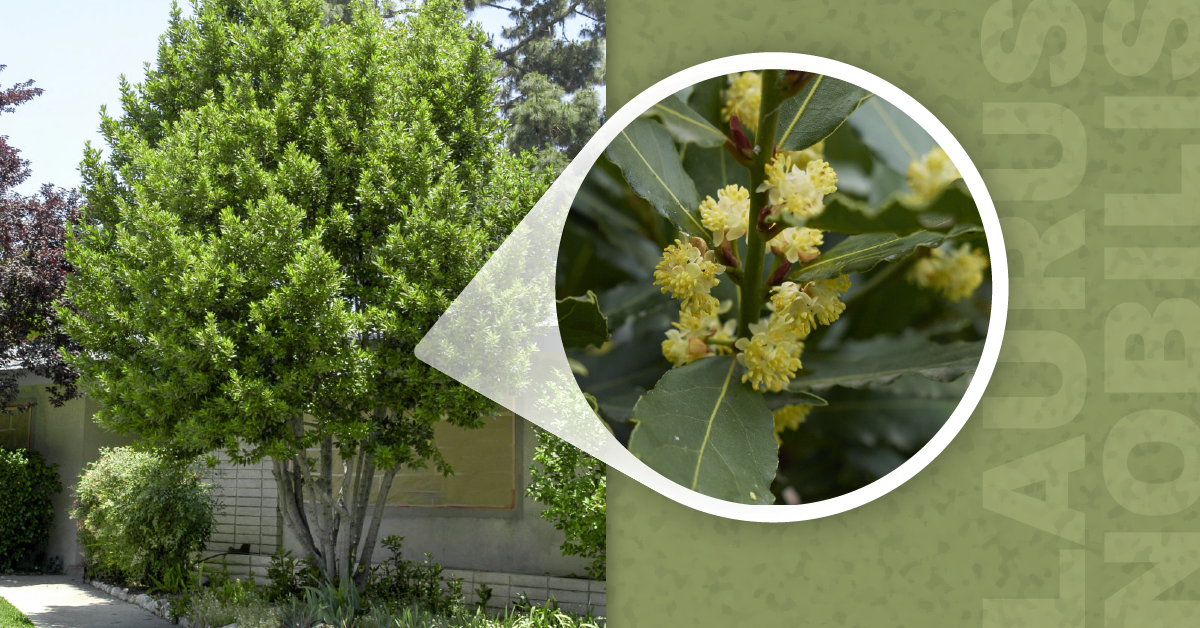
2. Mediterranean Basin – Laurus nobilis (Sweet Bay)
- Perfect For: An aromatic evergreen tree with culinary uses.
- Growth Habit: Reaches 20-30 feet tall and 20 feet wide.
- Blooms: Small yellow flowers in spring, followed by deep purple berries.
- Deer Resistant? Yes!
- Water Needs: Low water user once established.
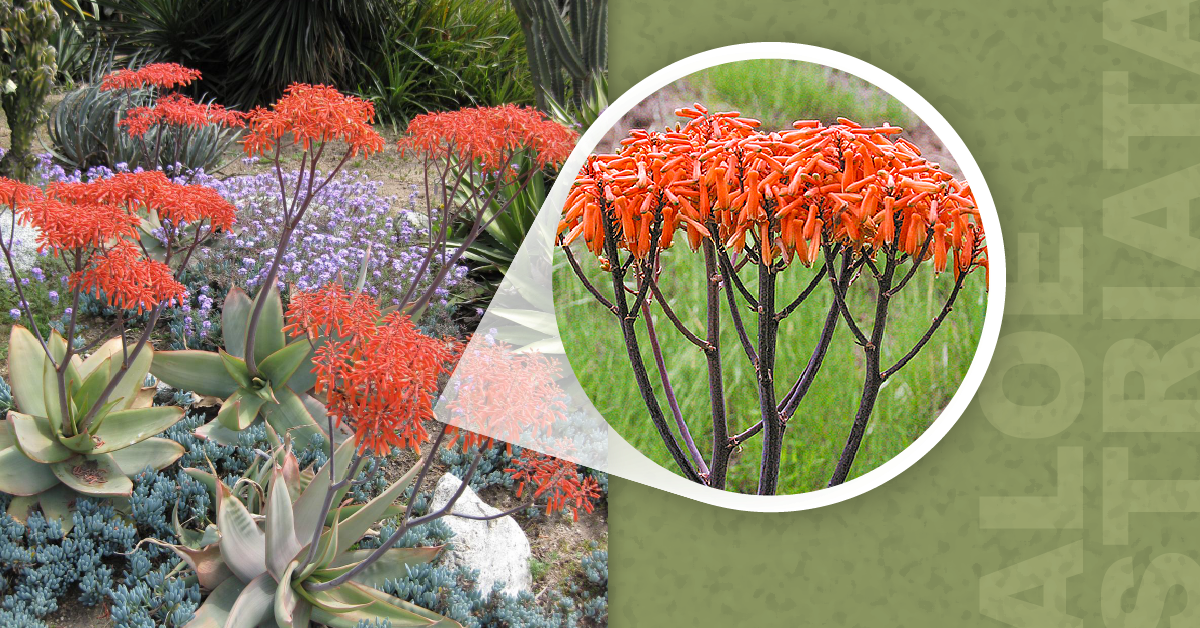
3. South Africa – Aloe striata (Coral Aloe)
- Standout Feature: Brilliant coral-pink to orange flowers in spring.
- Growth Habit: Succulent with a 2-foot-wide rosette of broad, pale green leaves.
- Light Preference: Full sun.
- Water Needs: Minimal water required.
- Attracts: Hummingbirds.
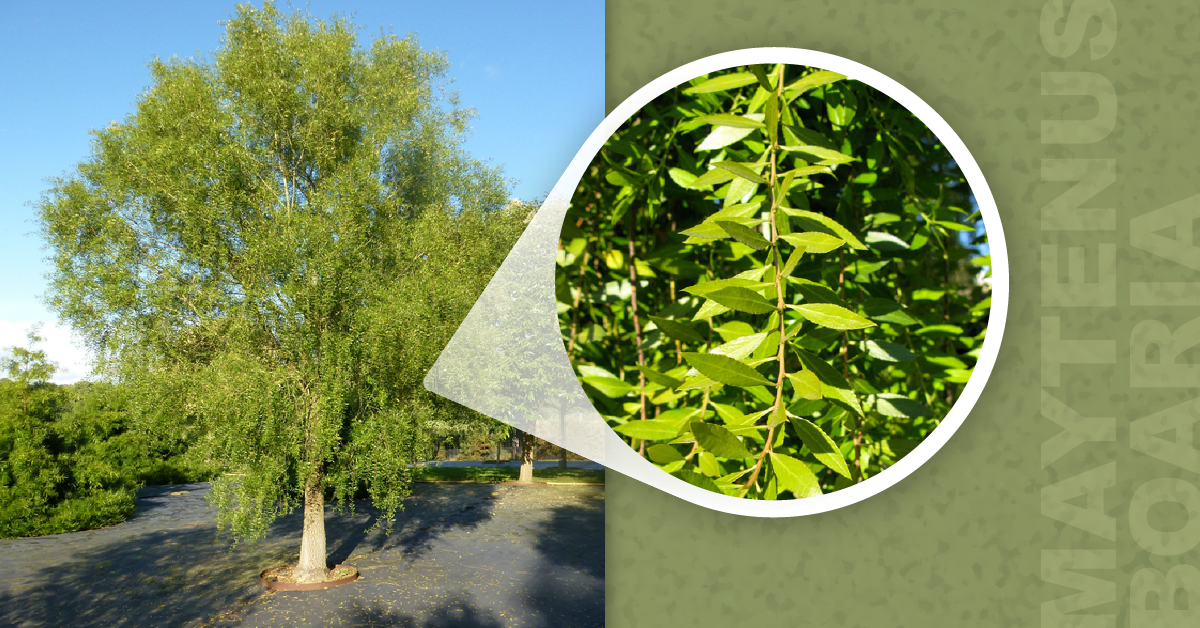
4. Central Chile – Maytenus boaria (Maytens Tree)
- Unique Characteristic: Graceful weeping form with light green, evergreen foliage.
- Growth Habit: Small tree reaching over 30 feet tall.
- Blooms: Tiny, inconspicuous spring flowers.
- Light and Water: Full sun and ample summer water.
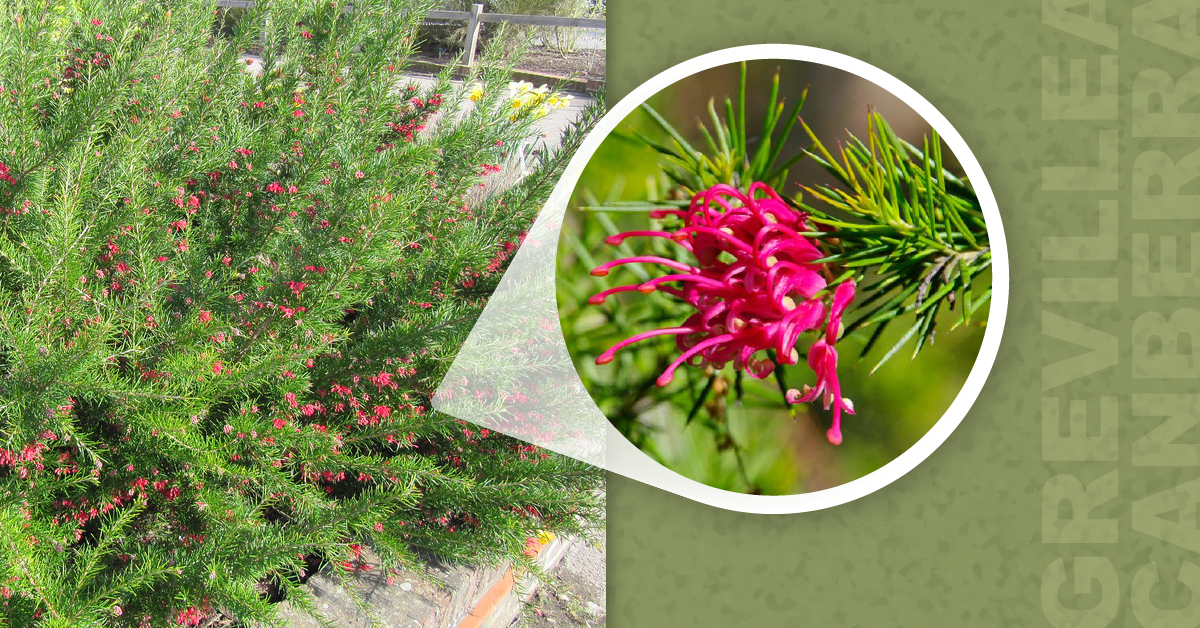
5. Southwestern Australia – Grevillea ‘Canberra Gem’ (Spider Flower)
- Multi-Functional: Provides beauty and acts as a barrier plant.
- Growth Habit: Shrub reaching 8 feet tall and 12 feet wide.
- Blooms: Red flower clusters starting in early spring and blooming intermittently.
- Attracts: Butterflies and birds.
- Water Needs: Occasional deep soakings, prefers good drainage.
Ready to Breathe Life into Your Landscape?
The experts at Madrone Landscape can help you design and create a flourishing California-Mediterranean paradise. Contact us today for a consultation and let’s transform your outdoor space into a stunning oasis! Email [email protected] or call (805) 466-6263.
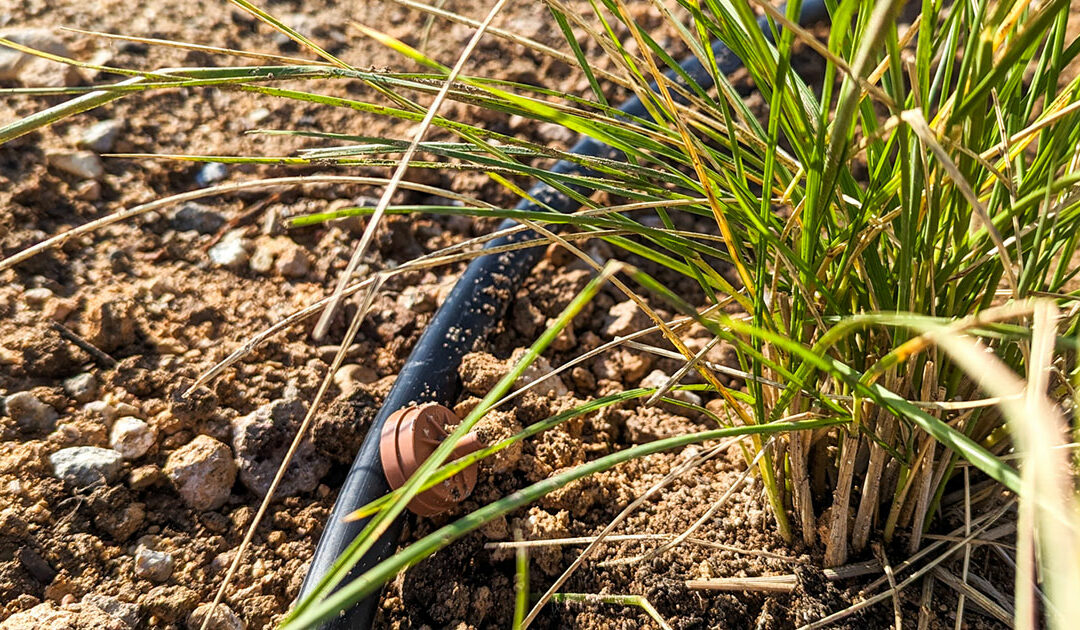
Mar 4, 2024
Set it, forget it. Give plants the nutrients without all the hassle.
Irrigation in California’s Central Coast is a crucial supplement to little rainfall. For plants and gardens that need more, applying controlled amounts of water also contributes to soil moisture from groundwater.
Fertilization, too, supplements its environment. Plants need a number of chemical elements to grow and thrive, from nitrogen to potassium. Fertilization can help otherwise struggling plants flourish by simply bringing the soil up to their needs.
Fertigation is the combination of both supplements, serving as a nutrient delivery system for landscapes. Fertilizer is delivered in the irrigated water and can use drip irrigation, spray nozzles, or heads.
How We Do It
Madrone Operations Manager Erik Gorham has provided fertigation services for almost a decade. He uses the EZ-FLO products to treat a wide variety of landscape issues. The process is as simple as our trained Madrone team installing a dispensing system in the valve box connected to the main line of a preexisting sprinkler system. “You really can forget about it, because part of our landscape maintenance program includes filling the unit with fertilizer every four to six weeks,” Erik shares.
We use Red Frog Compost Teas as part of our organic fertilizer program. The compost tea improves soil and plant health by improving nutrient availability and retention in the soil. “Biology feeds the plant,” explains Erik. “Typically, what plants need is in the soil. But if your soil is depleted, the worm castings offer an excellent soil amendment that is safe around children and pets.”
Savings on labor and energy costs can quickly offset the initial investment in a fertigation system. A homeowner who lives in an area affected by drought or water restrictions may prefer fertigation because they can better manage the nutrients and water supply going to their landscape—as well as increase water efficiency. It also gives them the ability to add nutrients directly into the root zone that may be otherwise difficult to access.
Erik sees it as an affordable investment to every landscape. “You chose your plants carefully. Help them mature more quickly and stay healthy by using this easy fertilizer system all year round.”
Learn more about our maintenance services. For more details, contact us at [email protected] or (805) 466-6263.
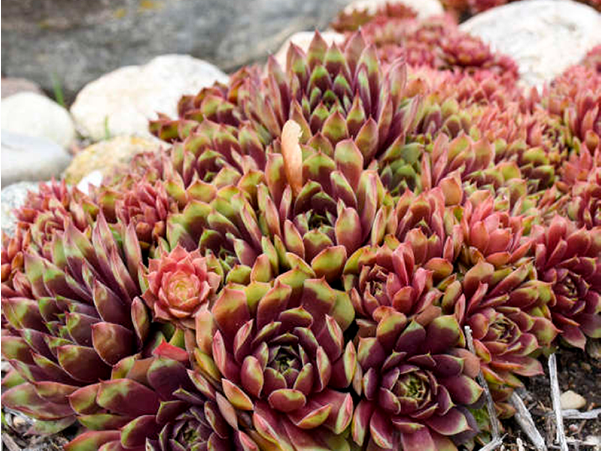
Jan 20, 2024
Four Winter-hardy Plants for your California Central Coast Landscape
Each native region has unique and beautiful seasonal cycles, with plants that flourish in the cold of winter as others shrink back. These naturally winter-hardy plants keep the surrounding nature looking full and alive. On top of that, they sustain the local fauna, protect the soil, and assist with the overall health of the local region.
As such, it is important to plan each landscape for a full year’s worth of seasons—with the plants that have adjusted to the climate of the region precisely. Native planting is rewarding, colorful, and much easier than trying to support plants not built to weather your region (or worse, taming an invasive plant that weathers the region a little too well). If your landscape doesn’t already account for all four seasons, there’s always time to add them in.
Here are four of our favorite winter plants for California’s central coast:
Nandina is a vibrant evergreen shrub that provides color year-round. In the warmer months, they sport variegated yellows and greens. As autumn catches on and the weather becomes cooler, they take on their fiery red.
A form of bamboo, they thrive on very little care and require no pruning. Once established, they are drought-tolerant as well. As a dwarf cultivar of the heavenly bamboo, its low shrubbery is excellent for small gardens or ground cover.
It should be noted that this plant is toxic to pets.
Arctostaphylos “Howard McMinn”
Arctostaphylos is a low-maintenance, low water-use manzanita shrub. Adapted to drought conditions in the summer, they hold their evergreen leaves perpendicular to the sun to avoid water-loss. Manzanitas are striking year-round thanks to their gorgeous red bark and those peculiar evergreen leaves. In the winter, they show dainty winter blooms that bring a soft delight to the season.
A fruiting shrub, their dry, apple-like fruits are edible to animals, and they are solely pollinated by native bees, supporting the native fauna. The European honey bee is not adapted to pollinate them. Each flower requires “sonification” for its fine pollen to be released from its bell-like flowers. Luckily, the native bees need them too.
Sempervivum “Hens and Chicks”
Sempervivum is a cold-hardy succulent that comes in a variety of colors and can be planted in rocky places with very little soil. It is deer-resistant and an attractant for bees and butterflies when it puts out its rare flowers—with them, though the “hen” dies after flowering, its “chicks” will continue.
These plants prefer cool nights and cold-dormant seasons, both frost-hardy and adapted to flourish in soils and conditions where most plants would die. They multiply plentifully when planted in a spot they love, and their texture and colored trim bring year-long delight.
Combined with their drought-tolerance, they’re perfect for the California Central Coast (and you’ve probably seen them around!). We love the look it creates when you stick them in cracks and crevices of stone walls or walkways.
Rosmarinus officinalis “Irene”
Trailing Rosemary, like manzanitas, is low-maintenance and low water use. When planted on top of retaining walls and allowed to drape over, they add drama to your garden. Their scent and seasonal flowers give them an added edge over some of the other trailing plant materials.
These plants flower in the winter and spring, lending their soft, pale blue or white blossoms to the landscape. It is a natural insect repellent to mosquitoes and other insectoid pests while being a strong attractant for a variety of pollinators. Because of these two factors, it is considered an ideal companion plant. It supports other flowering plants during the winter and acts as a guard to prevent more vulnerable flora and seedlings from cabbage loopers, carrot flies, snails, and more.
A flourishing, sustainable landscape takes into account diverse, eco-friendly flora that support and play well with each other. With native palettes, you know the landscape will be healthy, thriving, and contributing to the surrounding wildlife. Everything flourishes. In Central Coast California, native plants are sustainable, adapted to low-water conditions that mean less water waste and lower utility costs, and easy to care for. They are built to thrive in their climate conditions.
Combined with sustainable planting and maintenance, such as mulching, building with recycled materials, and more, a seasons-balanced landscape will ask very little from you or its surroundings—and give much, bringing joy year-round.
Plan and make space for winter-hardy plants to reap the endless benefits of your native environment.
Interested in a winter garden landscape design? Contact our landscape designers at [email protected] or (805) 466-6263.
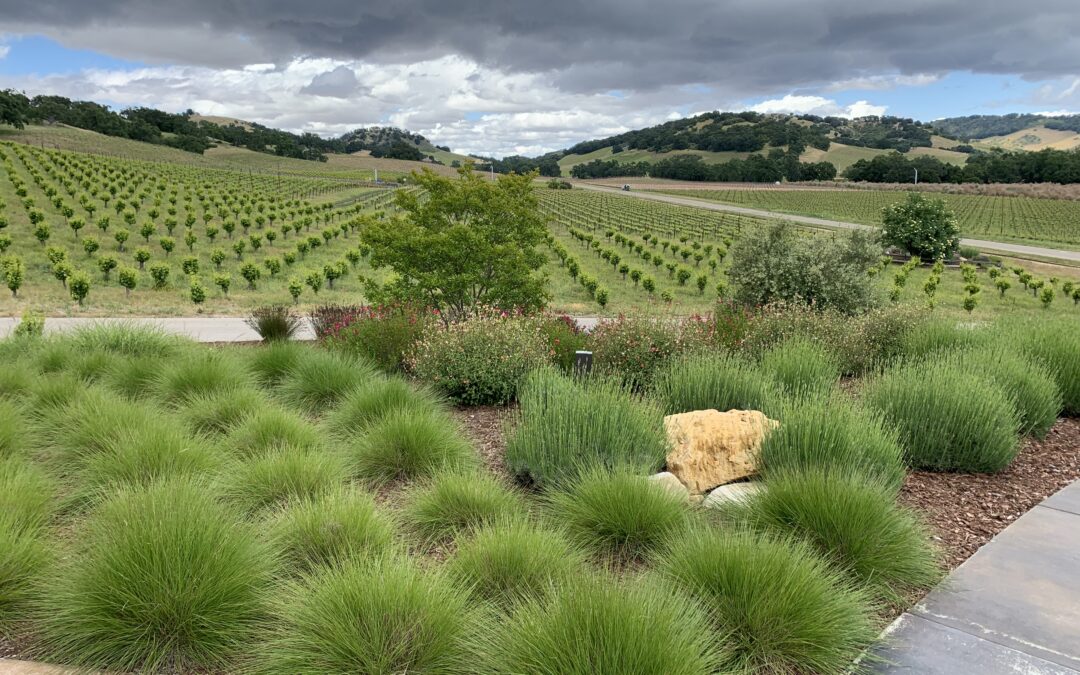
Dec 11, 2023
Tips for Bunch Grass Cutbacks on California’s Central Coast
Bunch grasses, prevalent in Central Coast California landscapes, offer a striking botanical mix of texture, movement, and vivid color. These perennial grasses, ranging from six inches to eight feet tall, are chosen for their foliage and seed head plumage. In the Central Coast, they typically require a significant annual trim to foster new growth.
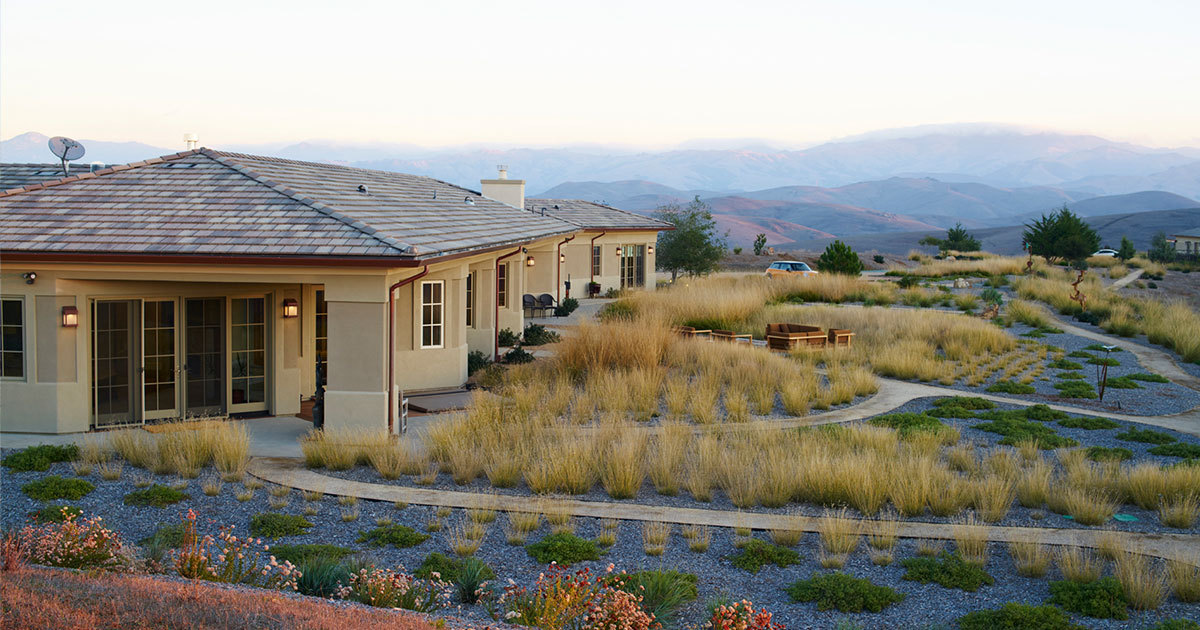
Ideal Timing for Bunch Grass Trimming
The primary goal of cutting back bunch grasses is to stimulate fresh, green growth and to remove dead foliage, enhancing plant health. While some varieties don’t necessitate annual trimming, others thrive with biannual or more frequent cutbacks. The general guideline suggests cutting back after the last hard frost, balancing aesthetics with frost protection. In frost-sensitive species, delay trimming until late winter.
In San Luis Obispo County, we adjust our trimming schedule according to three distinct regions: the beach areas (Morro Bay, Pismo Beach, Cambria, Los Osos, etc.), the coastal valleys (San Luis Obispo, Arroyo Grande, Edna, Nipomo, etc.), and the North County (Paso Robles, Templeton, Atascadero, Santa Margarita).
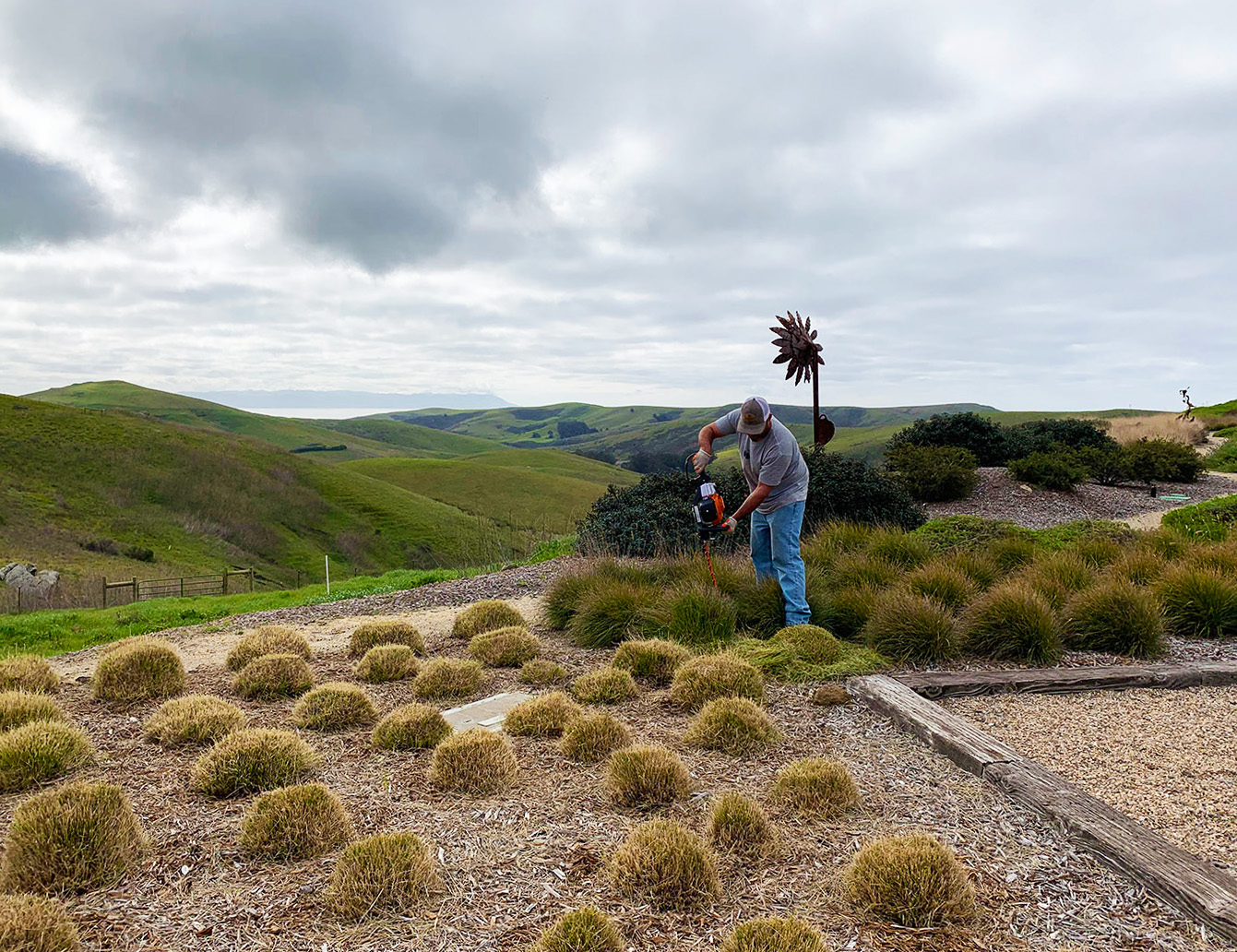
Regional Guidelines for Grass Cutbacks
- Beach Zones: Start as early as December-January. The mild weather allows for a variety of grasses, like the striking Purple Fountain Grass (Pennisetum setaceum rubrum). Here, the extended growing season offers a more flexible trimming window.
- Coastal Valleys: February is optimal, with the window extending from January to March. Purple Fountain Grass may wait until March, but most varieties are safe for a February trim.
- North County: The colder climate, influenced by the Santa Lucia Mountain Range, pushes the trimming window to February-April, with March being ideal. The limited grass variety here still offers a breathtaking seasonal display.
The key is to time your grass cutbacks to enhance both plant health and aesthetics, minimizing the dormant period of the trimmed grass.
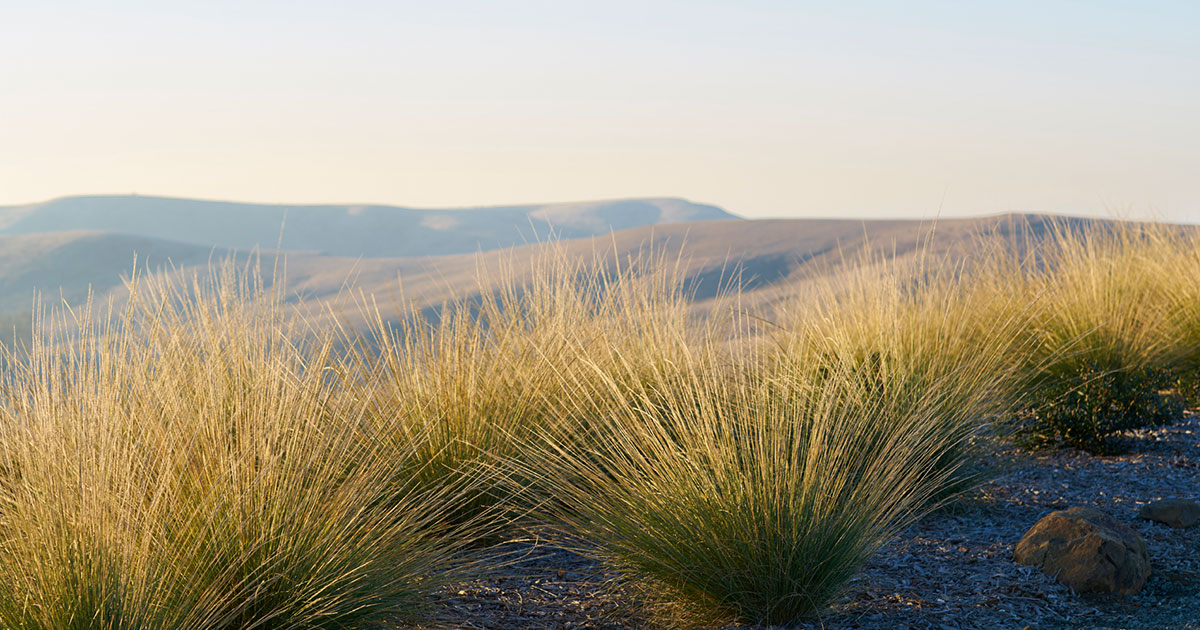
How to Execute Bunch Grass Cutbacks
Use sharp tools like shears, pruners, hedgers, or bladed weed whackers for trimming. Cut all blades close to the ground without harming the plant crown. Remove loose debris by hand to prevent rot and promote air circulation. Keep mulch and other materials at least 2 inches away from the grass crown.
Recommended Pruning Heights
Low(2-4 inches): Suitable for Festuca spp., Carex spp., and similar species.
Medium (4-8 inches): Ideal for Muhlenbergia rigens and dubia, small to medium Miscanthus spp., and others.
High (8-12 inches): Best for larger varieties like Miscanthus spp., Cortaderia spp.
Muhlengergia Rigens (MEDIUM)
Seeking Professional Landscape Maintenance?
If you’re interested in landscape maintenance, including bunch grass cutbacks, contact us at Madrone Landscape. We’re currently accepting maintenance projects starting at $400/month. Reach out through our Maintenance Request Form, email us at [email protected], or call (805) 466-6263.
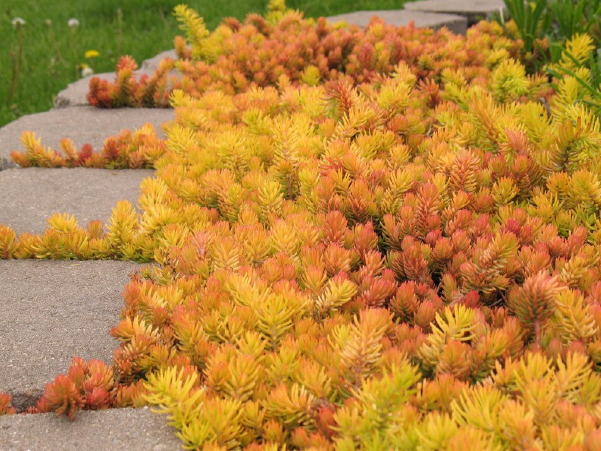
Nov 6, 2023
Autumn Brilliance: Elevate Your Central Coast Landscape with Seasonal Color
Embrace the cooler season on the Central Coast with a vibrant autumn landscape. The shift to fall brings a flourish of foliage that turns your garden into a canvas of warm colors. Madrone Landscape specializes in plants that promise a vivid display as the temperatures drop. Let’s explore our top picks that guarantee a vibrant autumn landscape.
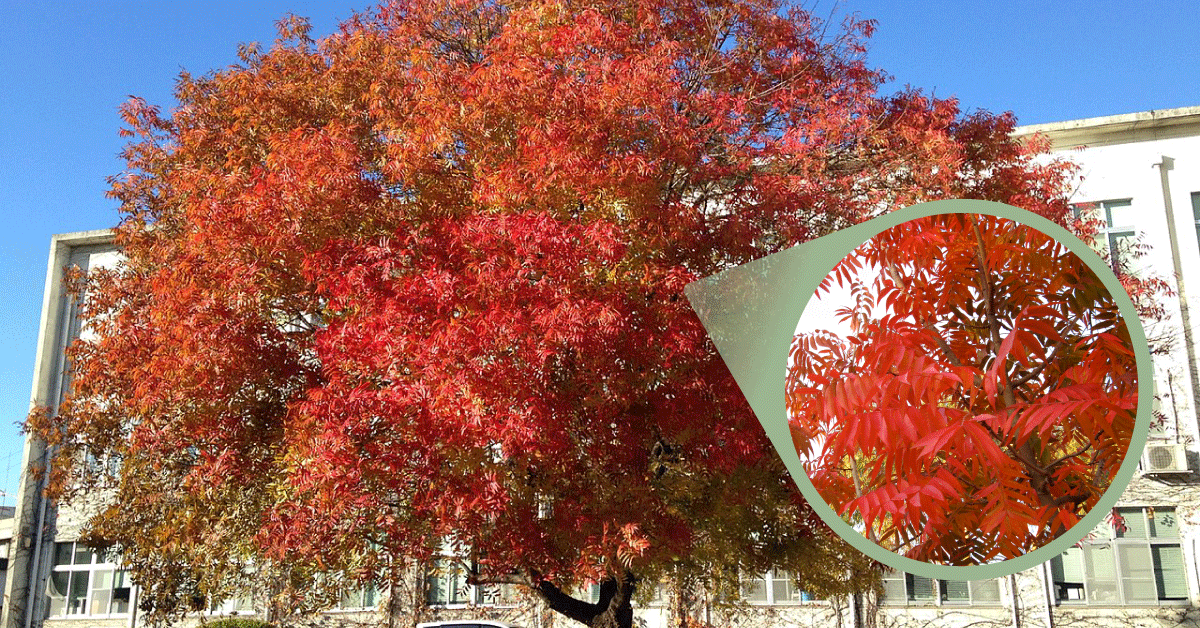
Chinese Pistache (Pistacia chinensis)
Thriving in sunny spots, the Chinese Pistache shines with drought-resistant qualities. As temperatures dip, its foliage erupts into a fiery blend of orange and red hues. The tree’s October berries are a gift to the local wildlife, while its balanced, symmetrical form makes for an exquisite focal point in any garden.
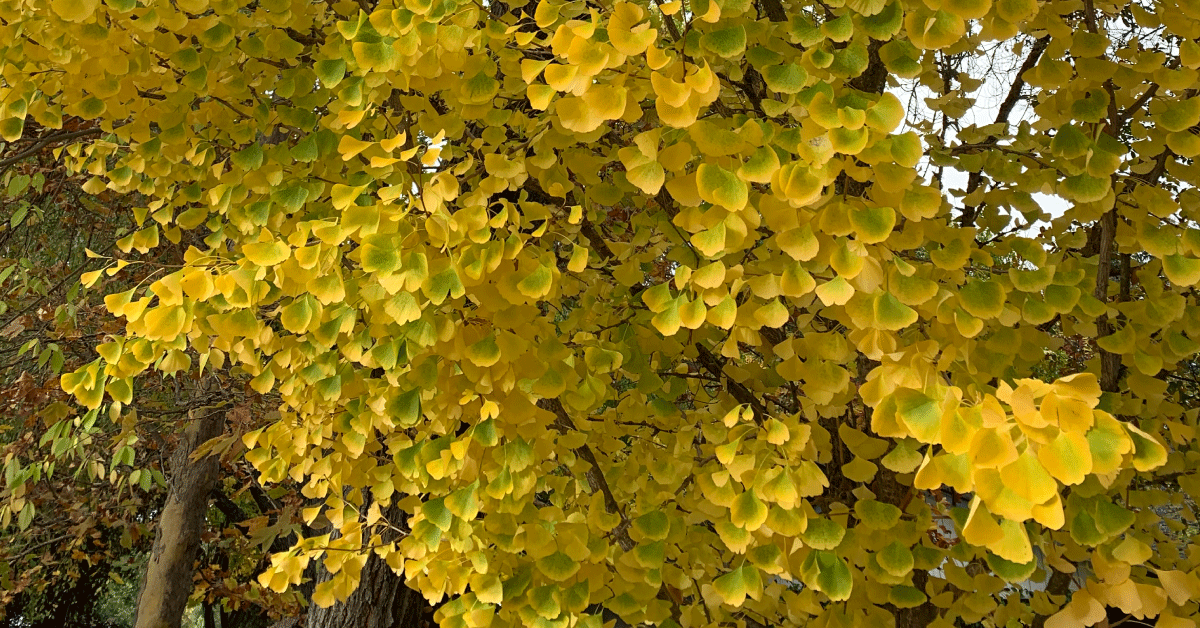
Maidenhair Tree (Ginkgo biloba “Autumn Gold”)
With fan-shaped leaves that turn a luminous yellow, the Ginkgo biloba “Autumn Gold” becomes the highlight of a vibrant autumn landscape. This tree’s golden foliage creates a stunning contrast, especially when paired with the fiery backdrop of other autumnal shades.
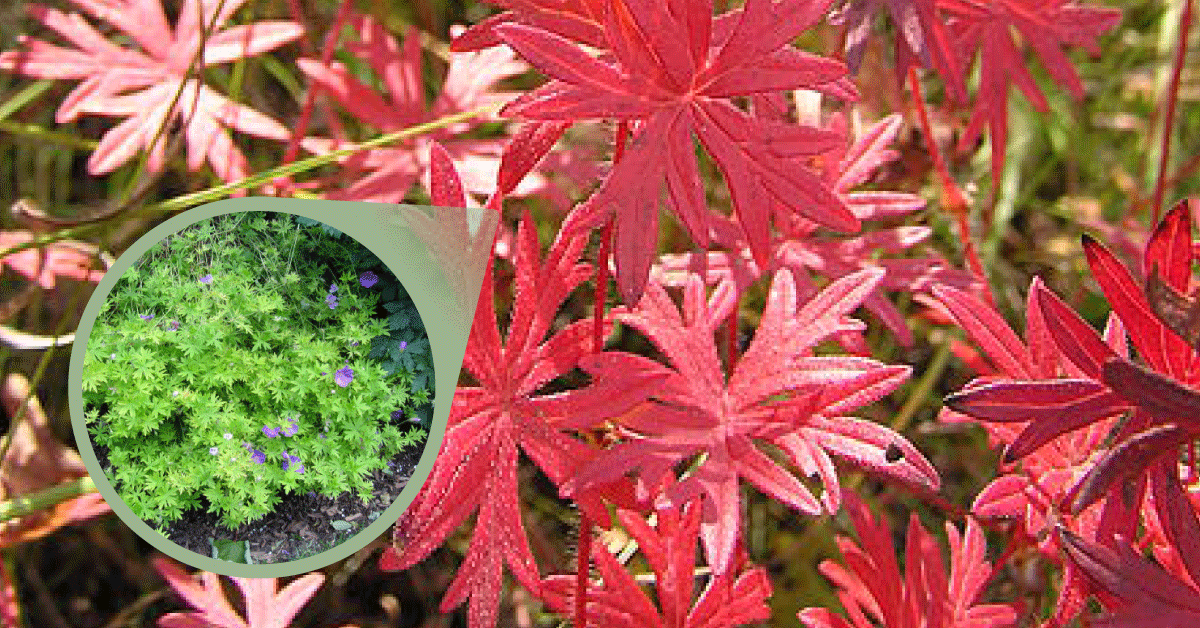
Bloody Geranium (Geranium sanguineum)
Beyond its vibrant magenta blooms in the warmer months, the Bloody Geranium’s foliage takes on a crimson coloration in fall, living up to its name. Its delightful leaf shape offers a bushy accent or a sprawling ground cover that keeps your garden lively through the seasons.
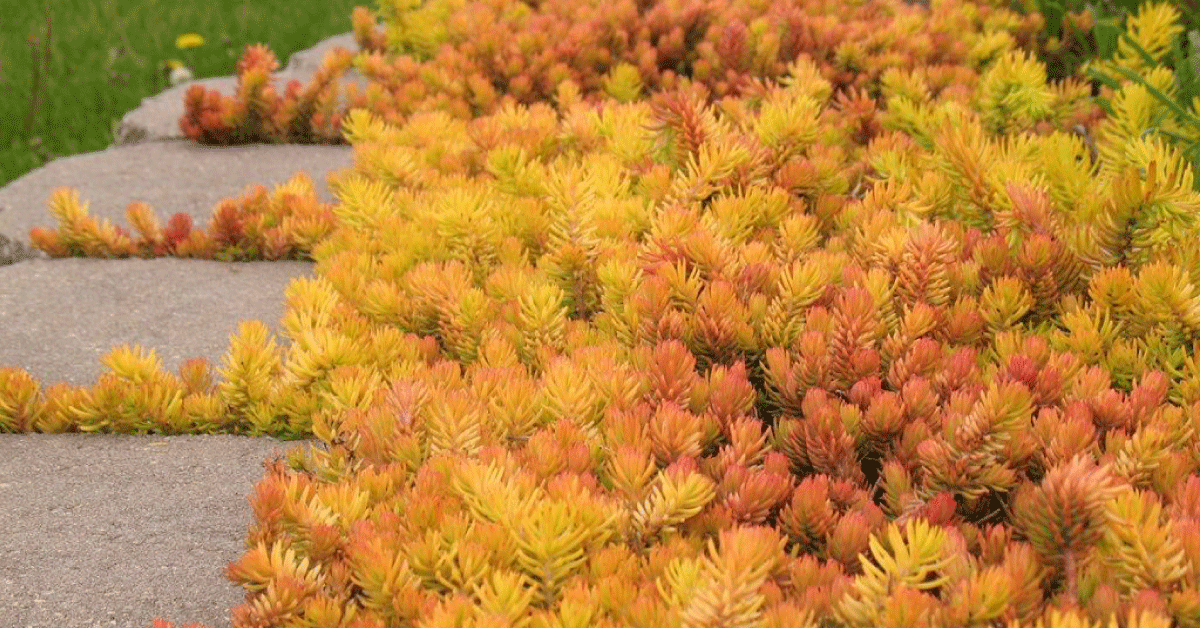
Golden Stonecrop (Sedum reflexum “Angelina”)
This resilient succulent maintains a sunny disposition year-round, which intensifies into a rich gold with the chill of fall. Ideal for rocky soils, Golden Stonecrop is a fuss-free choice that keeps gardens bright and weed-free.
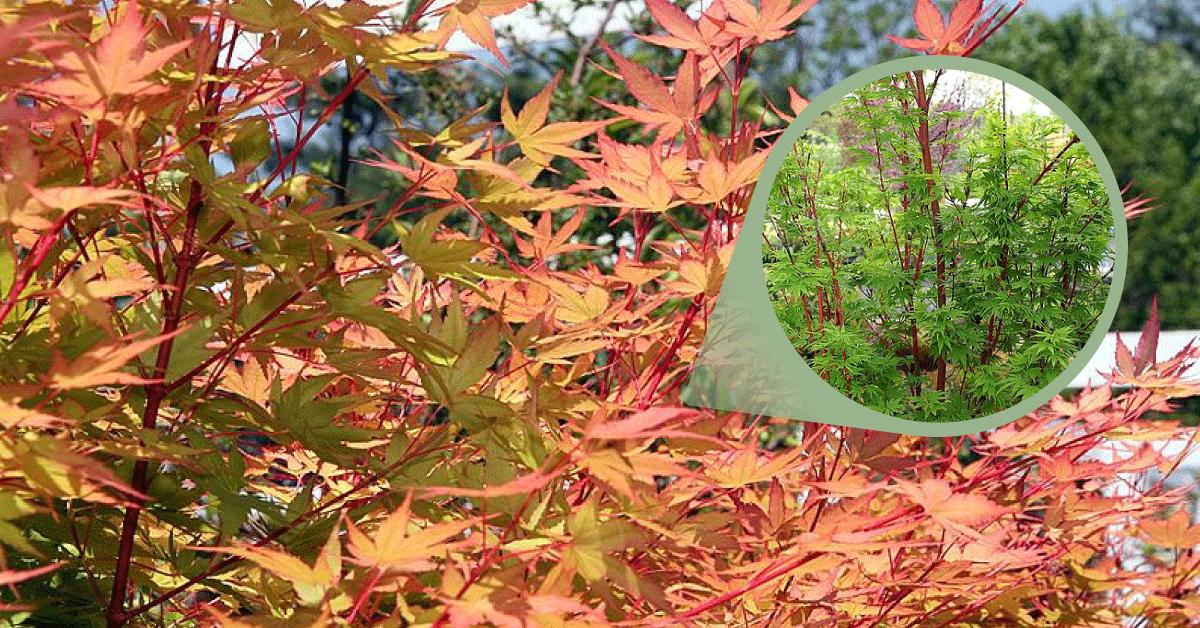
Coral Bark Japanese Maple (Acer palmatum “Sango Kaku”)
A twist on the beloved Japanese Maple, the ‘Sango Kaku’ variety captivates with its seasonal transformation. Lime-green leaves yield to golden tones and fall away to unveil a stunning red bark, providing a dramatic backdrop throughout the colder months.
Ready to elevate your landscape with these autumnal beauties? Reach out to our design team at Madrone Landscape at [email protected] or call us at (805) 466-6263 for a consultation. Transform your space into a seasonal spectacle.
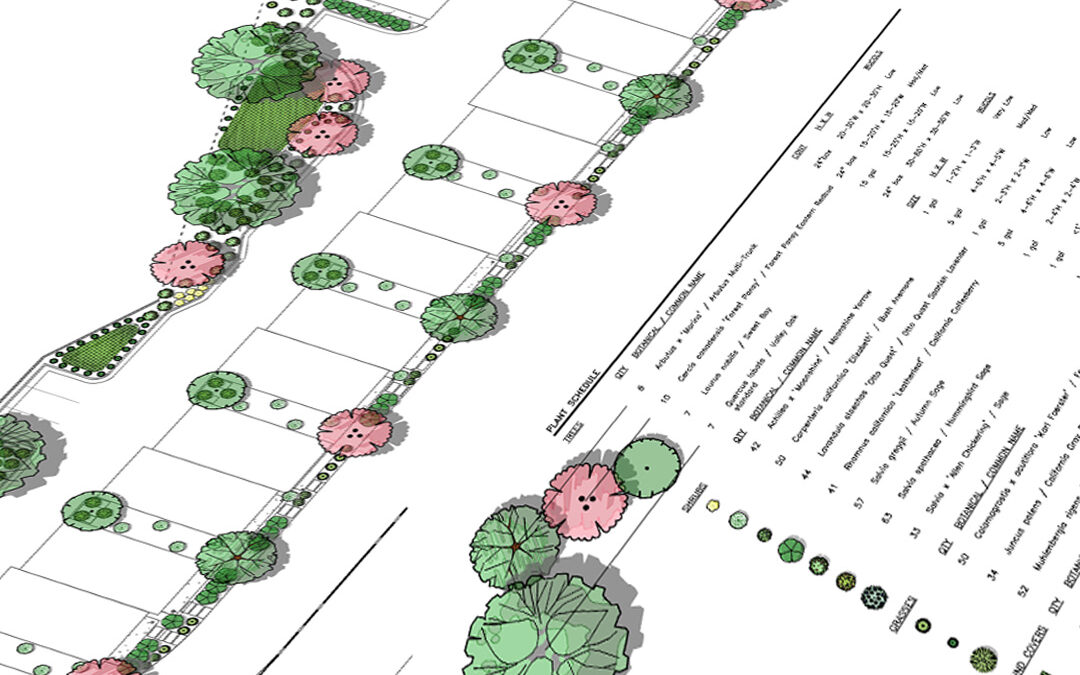
Oct 18, 2023
Landscape Design in Templeton, CA
Nestled on the scenic slopes above Toad Creek in Templeton, CA, Toad Creek Terrace is a multi-family residential project that effortlessly marries cutting-edge design with environmental consciousness. Our mission at Madrone Landscape was to provide a landscape design that not only complements the native surroundings and also meets state water-use guidelines.
Water-Smart Design
Understanding California’s water conservation landscape, our irrigation strategy for Toad Creek Terrace was meticulously crafted to be efficient. We utilized advanced calculations to create an irrigation system that meets or even exceeds state regulations, without sacrificing the integrity of the design.
Harmonizing with Nature
Our planting plan for Toad Creek Terrace was created with an awareness of the project’s unique geographical settings. To harmonize with the local flora, especially the native oak trees, we integrated a palette of native and Mediterranean plants. This allows us to offer a modern aesthetic while preserving the natural feel of the surrounding area.
Toad Creek Terrace stands as a compelling example of how innovative design can be married with environmental consciousness. We are delighted with the final outcome—a sustainable, low-maintenance landscape that resonates with both residents and the natural surroundings.
If you’re a residential or commercial property owner in the California Central Coast looking to elevate your outdoor spaces, we at Madrone Landscape are here to bring your vision to life. Don’t hesitate to contact us for any landscaping services at [email protected] or give us a call at (805) 466-6263.
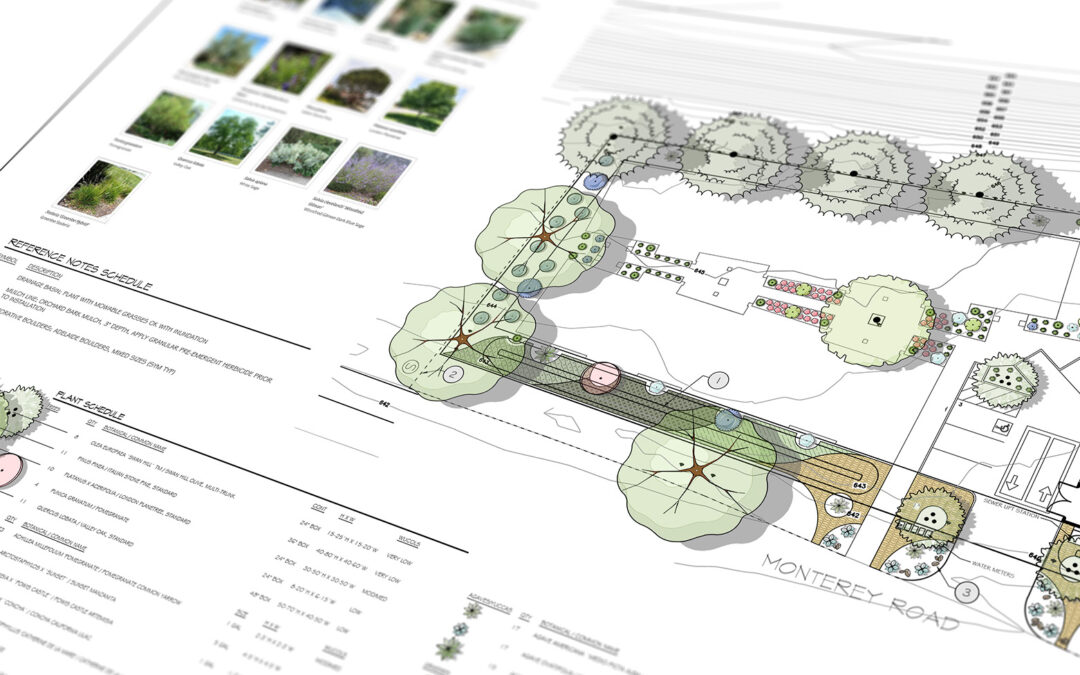
Oct 18, 2023
An Ambitious Project with a Historic Connection
Situated near the iconic San Miguel Mission, the design of San Miguel Apartments incorporates the timeless California Mission style. Our aim was to create an environment that not only complements the architectural elements of the apartments but also pays homage to the mission and the surrounding community.
Water-Efficient Irrigation
Given California’s water conservation requirements, our irrigation plan was crafted meticulously to be water efficient. Our experts used smart water calculations to meet or exceed state guidelines without compromising the beauty of the landscape.
Embracing the Mission
Our planting plan was designed to align with the mission style of the proposed apartment buildings. We incorporated native plants and traditional elements to create a harmonious blend of old and new.
Safety for Residents
In any landscaping project, safety is paramount. For San Miguel Apartments, the challenge was to design a planting plan that considers the safety of the residents while still maintaining aesthetic integrity. Specifically, we focused on avoiding dense plantings that could potentially block visibility or encourage loitering. Our design team conducted multiple revisions to ensure that the landscape will be both beautiful and secure.
The San Miguel Apartments project presents a unique intersection of history, community, and modern landscape design. We are currently in the design phase and are excited about bringing this vision to life. Stay tuned for updates as we continue to make progress on this incredible project. If you’re a homeowner or business in the California Central Coast area interested in landscaping services, we invite you to get in touch with us at Madrone Landscape.
If you’re a homeowner or business in the California Central Coast area interested in transforming your landscape, Madrone Landscape is here to make your vision a reality. Feel free to reach out to us at [email protected] or (805) 466-6263 for all your landscaping needs.
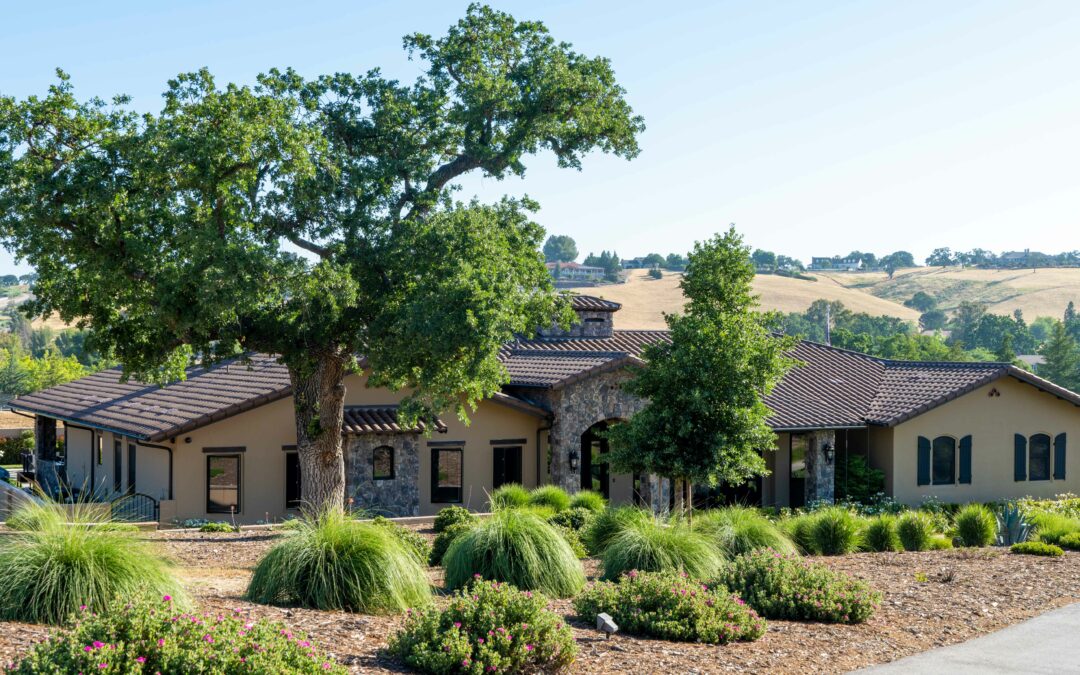
Oct 3, 2023
Maximize the Potential of California Landscapes with Mulch
Mulching is a game-changer for California central coast landscapes, offering a multitude of benefits that every gardener and landscaper should take advantage of. From controlling weeds to conserving moisture, mulch is a versatile tool that enhances the beauty and functionality of outdoor spaces. In this Guide to California Landscape Mulching, we’ll explore the key benefits, various types, and effective methods of using mulch in California landscapes.

Control Weeds and Conserving Moisture
Mulch is a gardener’s best friend when it comes to controlling weeds and retaining moisture. By applying a layer of mulch, you can reduce the growth of unwanted plants, particularly annuals, by up to 90%. This not only keeps your landscape looking pristine but also saves on landscaping labor costs and reduces the need for toxic herbicides.
Moreover, mulch plays a vital role in conserving soil moisture, helping you cut down on irrigation expenses. In regions like San Luis Obispo County, where water conservation is crucial, mulching can significantly reduce the amount of water needed to keep your plants healthy.
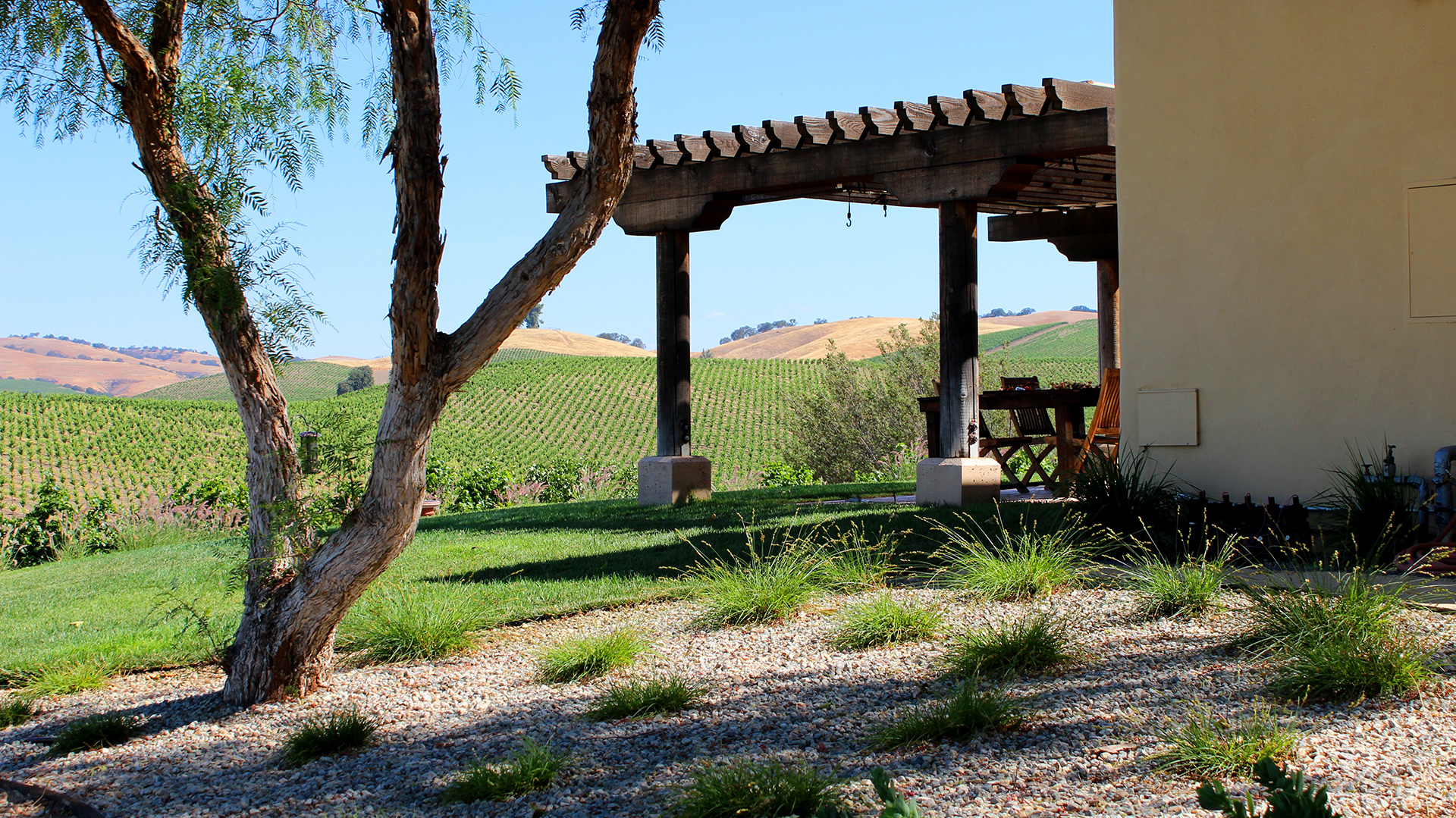
Promote Soil Health
Mulching is not just about aesthetics; it also promotes the overall health of your garden. As mulch decomposes, it enriches the soil with essential nutrients, improving its organic matter content and providing a source of sustenance for beneficial organisms. Additionally, mulch reduces soil compaction and insulates plants from extreme temperatures. This insulation effect can lower soil temperatures by up to 10 degrees, which is especially beneficial for young plants and trees.

Reduce Soil Erosion
Erosion is a significant concern, especially on slopes. Mulch acts as a protective barrier that keeps the soil in place during heavy rain and wind, reducing the risk of erosion. By deflecting the impact of raindrops, mulch minimizes stormwater runoff and helps maintain the integrity of nearby creeks and waterways.
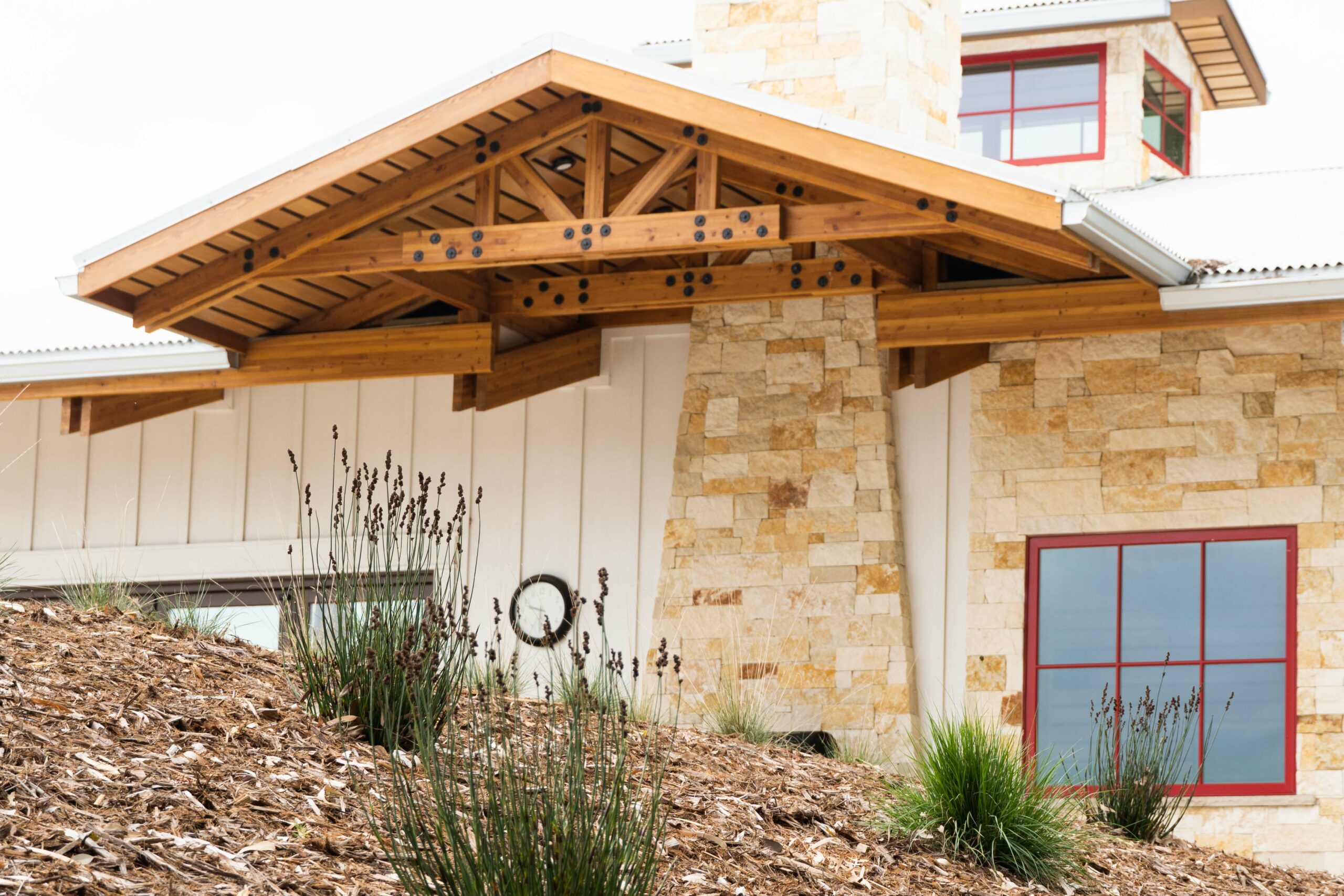 Enhance Aesthetics
Enhance Aesthetics
Beyond its practical benefits, mulch adds a finishing touch to your landscape. A well-maintained mulch layer creates a clean, uniform appearance that ties your garden together. It provides a polished look that complements the natural beauty of your plants and hardscape features.
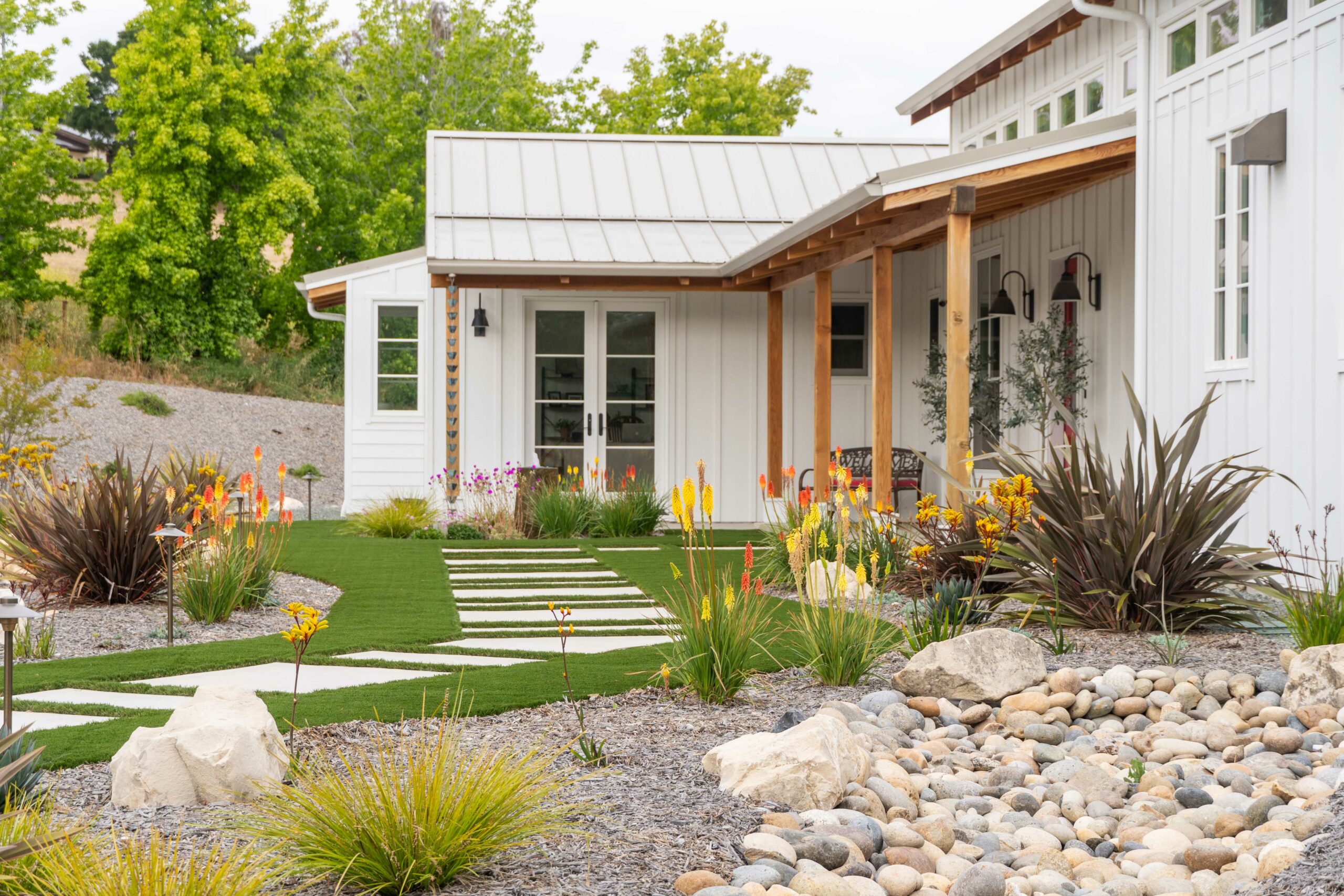 Choose the Right Mulch Material
Choose the Right Mulch Material
When selecting mulch for your California landscape, consider the style and design of your garden. While bark and wood products are common choices on the Central Coast, there are various other options to explore. These include stone, such as colorful rocks and gravel, as well as sheet mulching using materials like newspapers, cardboard, and plastic sheeting.
Recycled organic mulches, such as wood chips, compost, leaves, pine needles, and grass clippings, are eco-friendly choices that reduce the need for long-distance shipping. Using mulch from local tree trimming operations is not only sustainable but also contributes to maintaining the usefulness of these by-products.
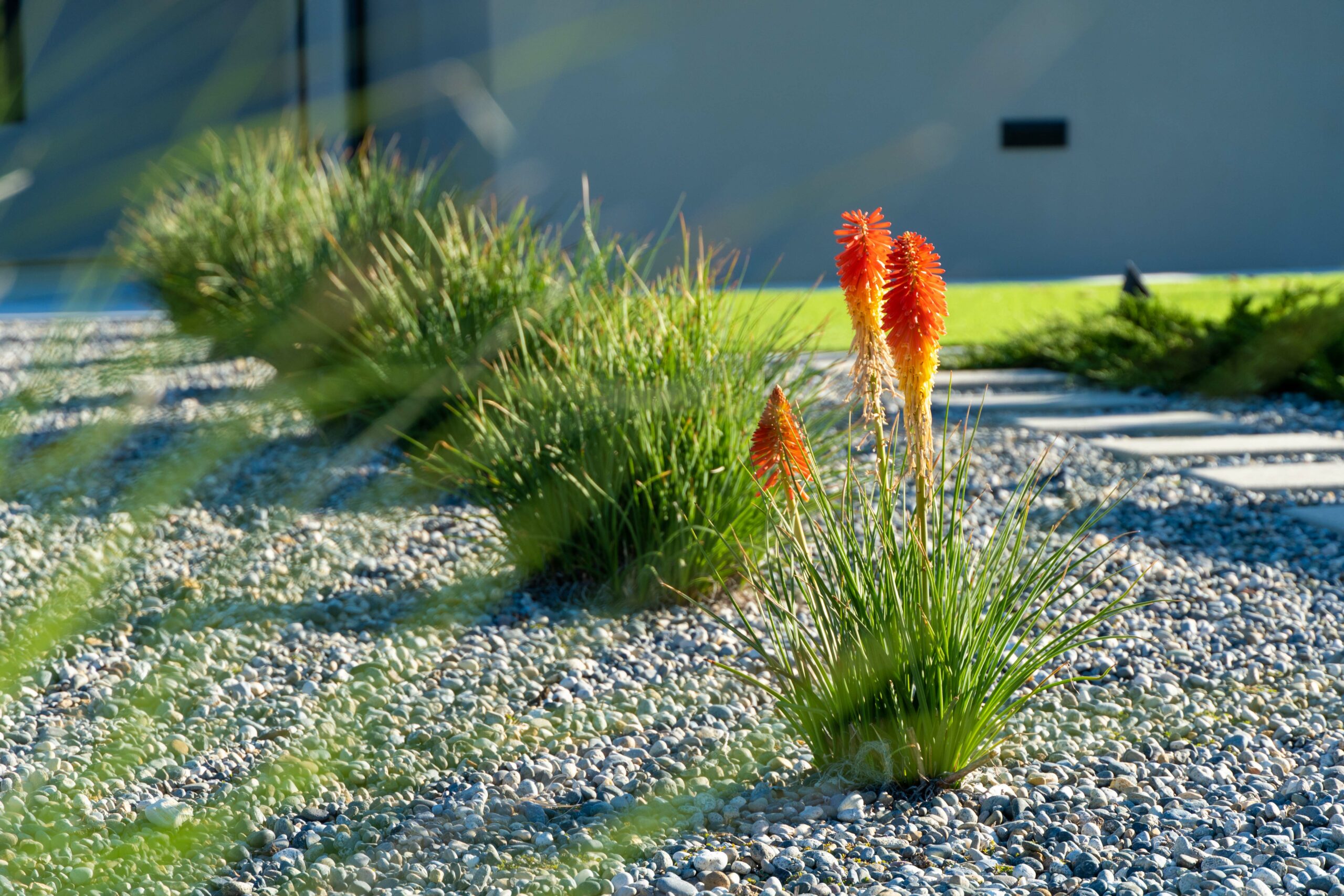
Consider Fire Safety
In many coastal California communities, wildfire safety is a paramount concern. It’s essential to be mindful of the combustibility of organic mulch. Research conducted at the University of Nevada Cooperative Extension has shown variability in mulch type combustibility. To reduce wildfire danger, it’s recommended not to use any organic mulch within five feet of homes located in wildfire-prone areas.
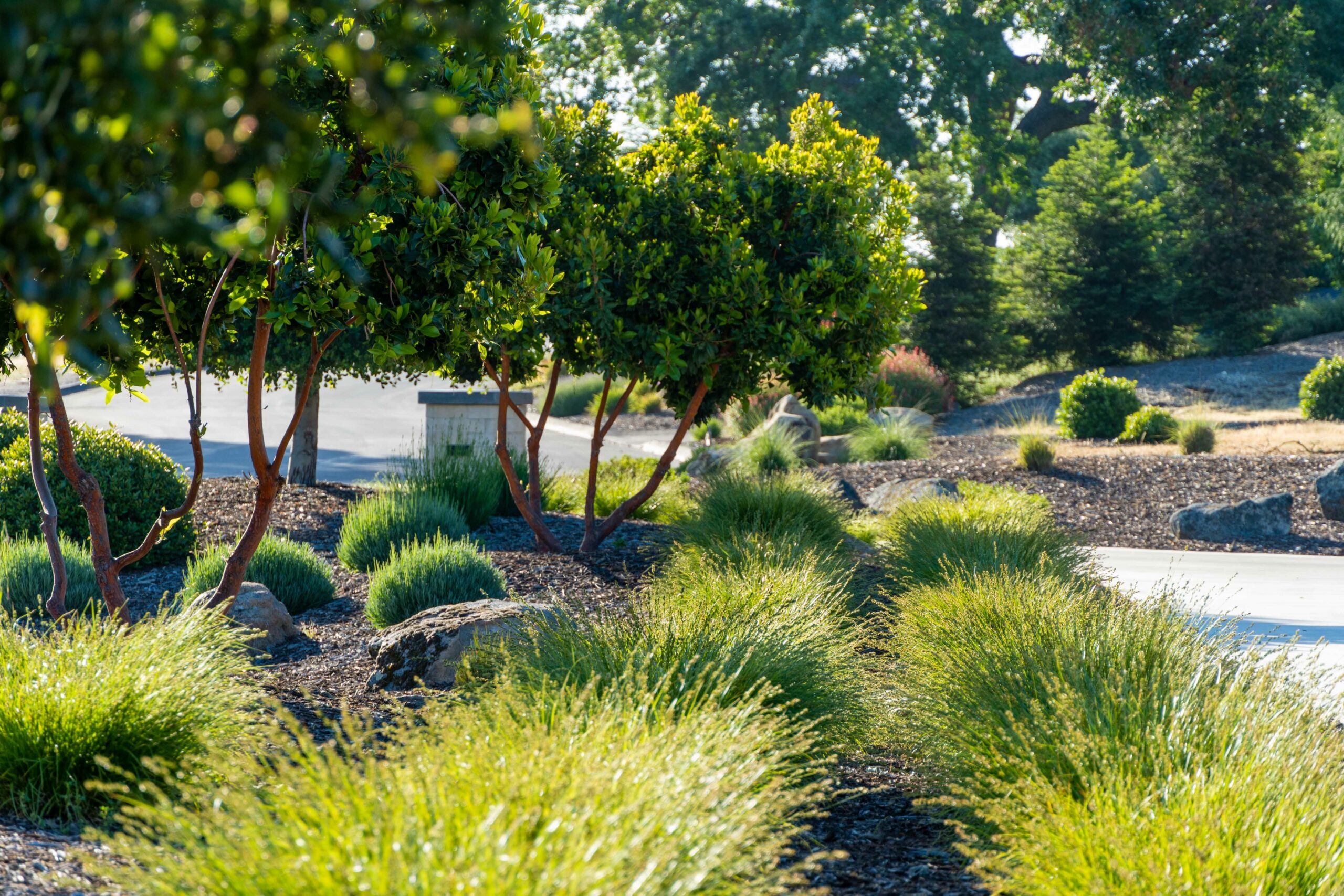 Determine the Right Amount of Mulch
Determine the Right Amount of Mulch
To maintain the benefits of mulch, aim for a 2- to 4-inch layer in your planting areas. Regularly inspect and refresh mulched areas as needed. Keep mulch at least two to three inches away from plant stems and trunks to prevent moisture-related issues. For trees in lawns, create a mulch circle around the base, with a diameter of about 2 feet for each inch of trunk diameter.
 Embrace the Power of Mulch
Embrace the Power of Mulch
Mulching is a versatile and cost-effective practice that enhances the beauty and health of California landscapes. It saves time and money, promotes soil health, prevents erosion, and adds a finishing touch to your outdoor spaces. Make the most of mulch to create thriving, sustainable gardens that are both visually appealing and environmentally responsible.
If you have any questions about our mulching services or want to learn more about our maintenance program, please don’t hesitate to contact us at [email protected] or (805) 466-6263.










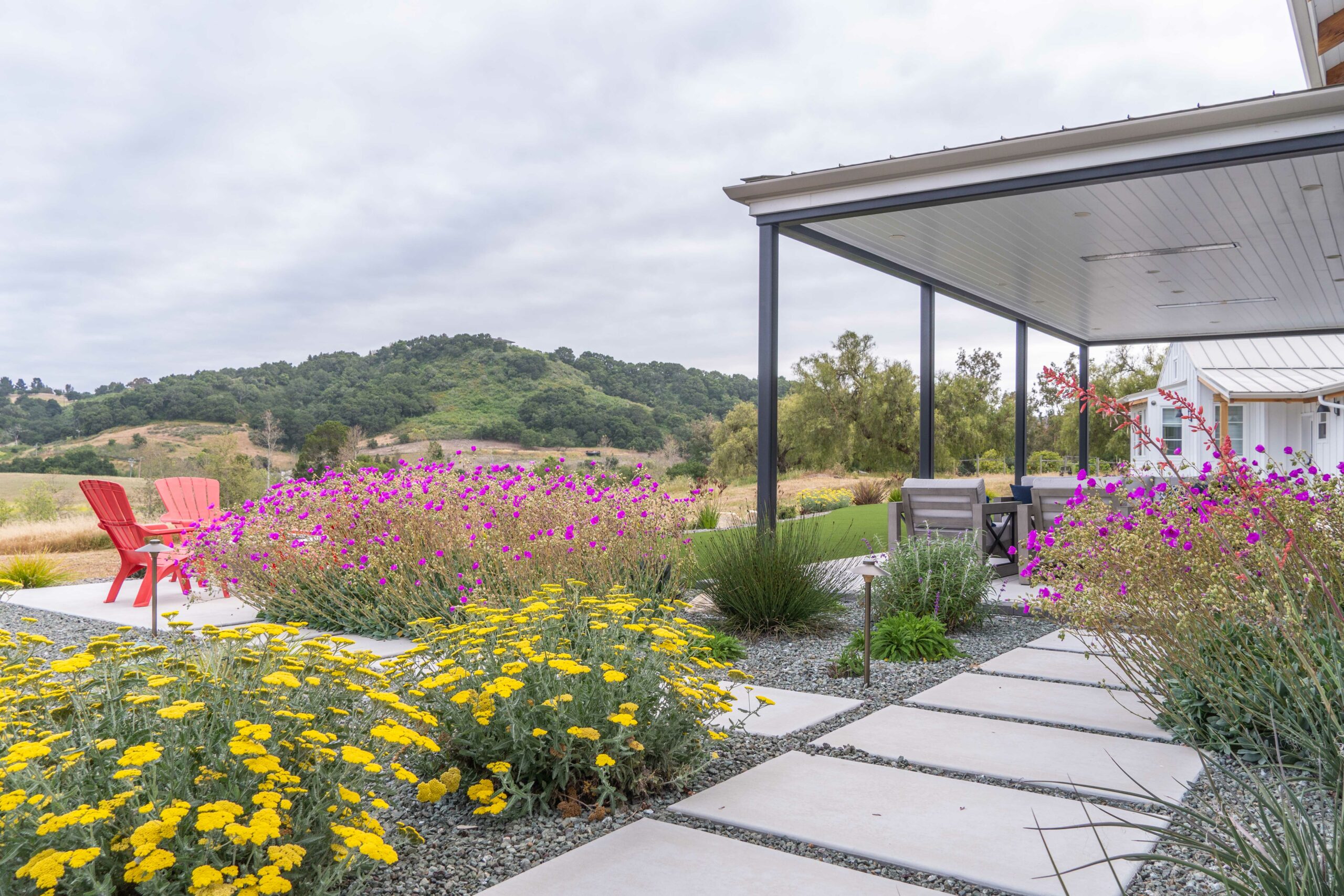
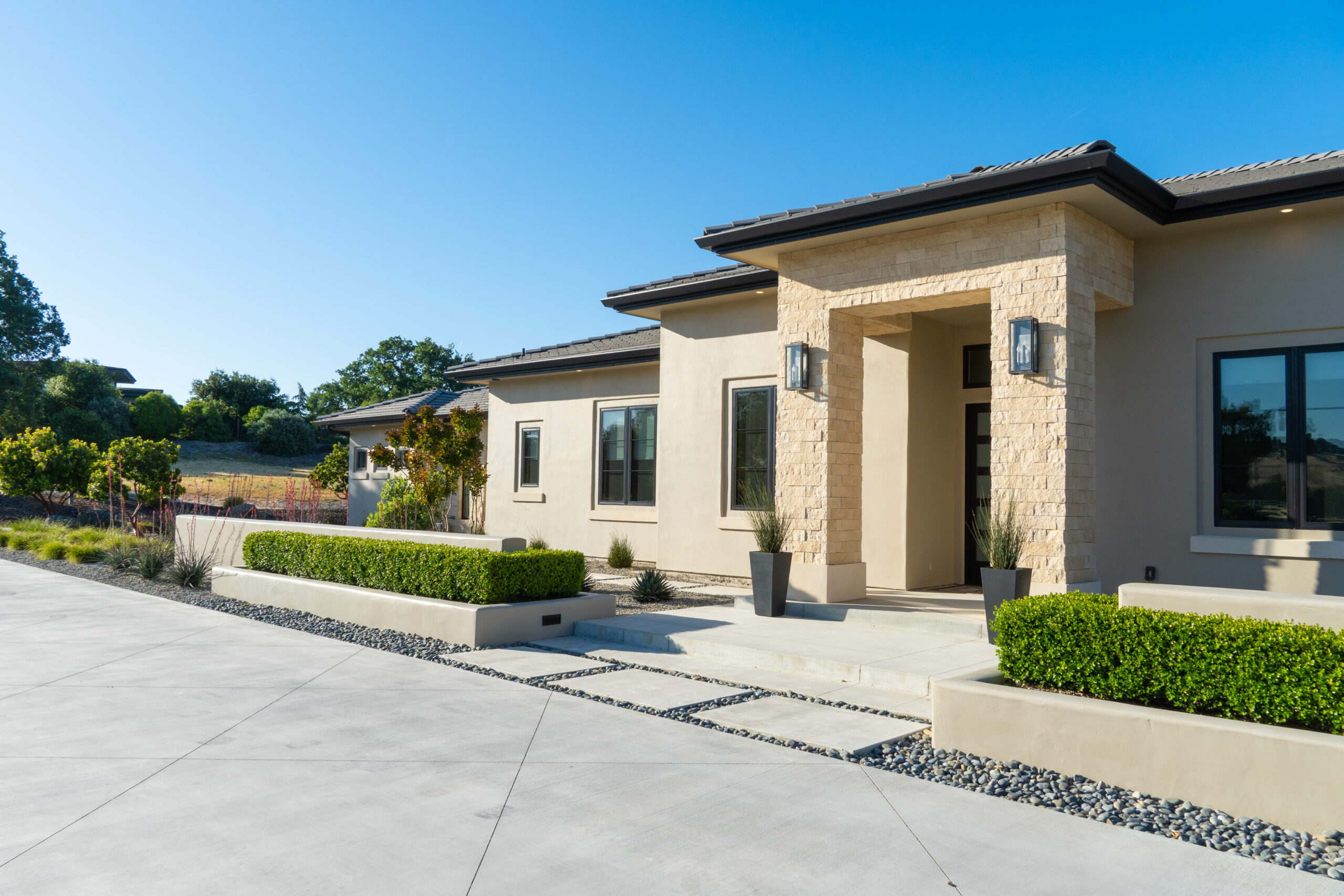


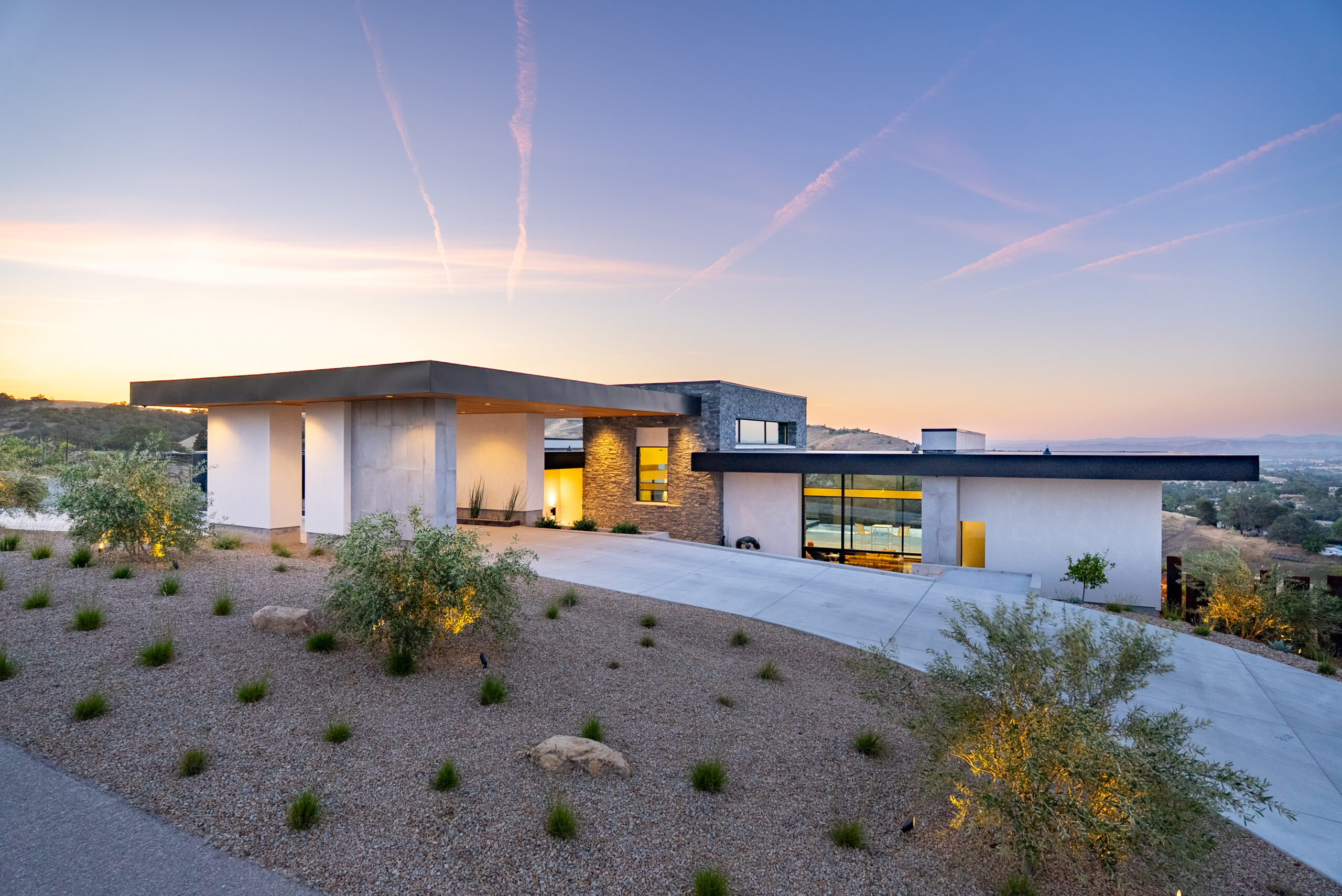

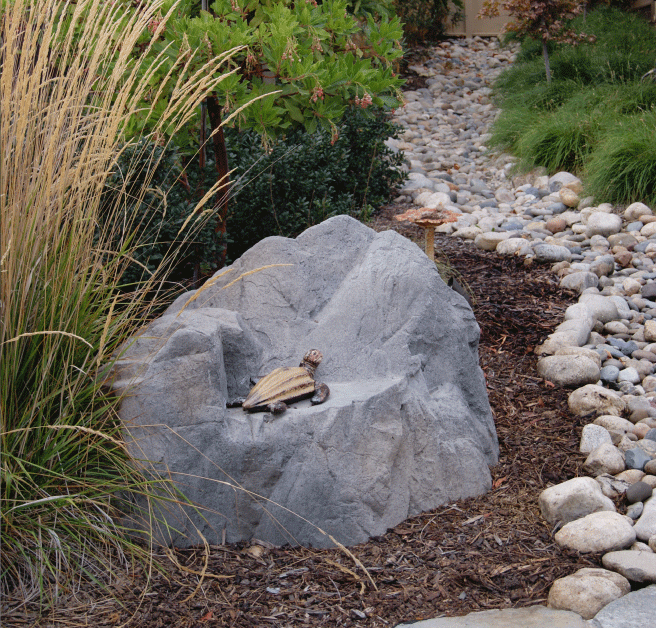
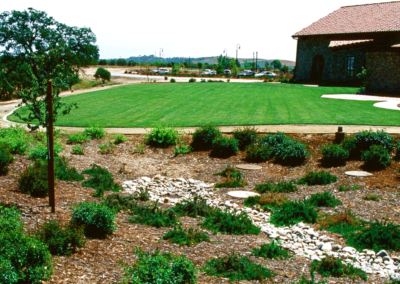
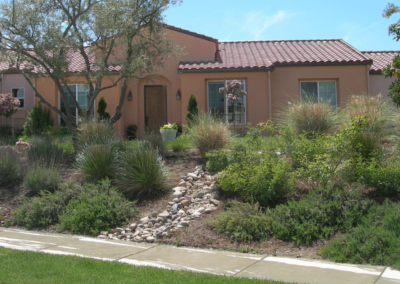
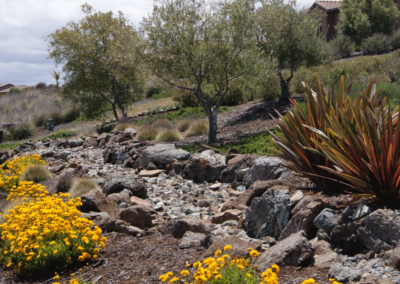
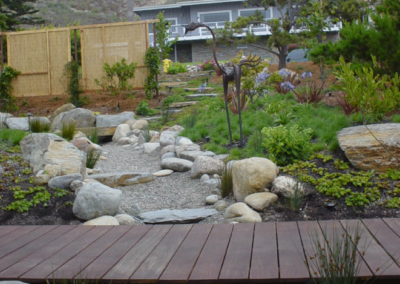
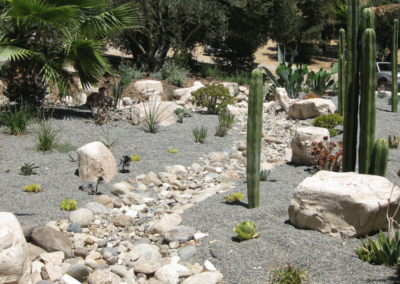

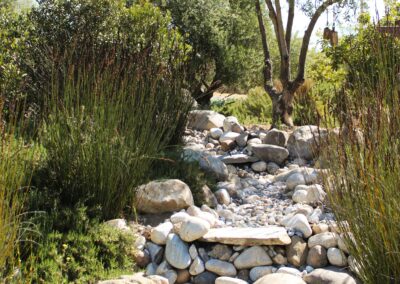
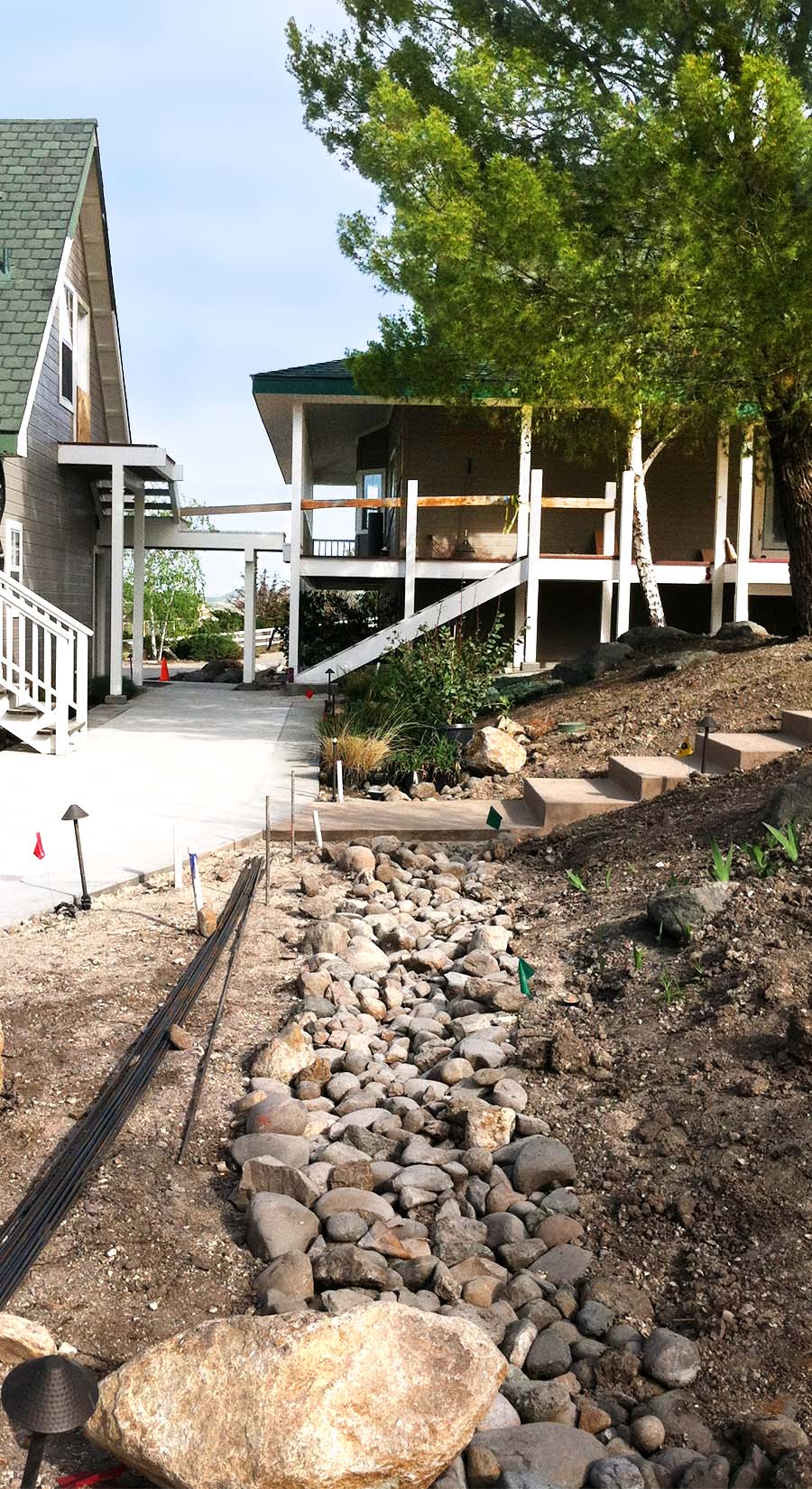
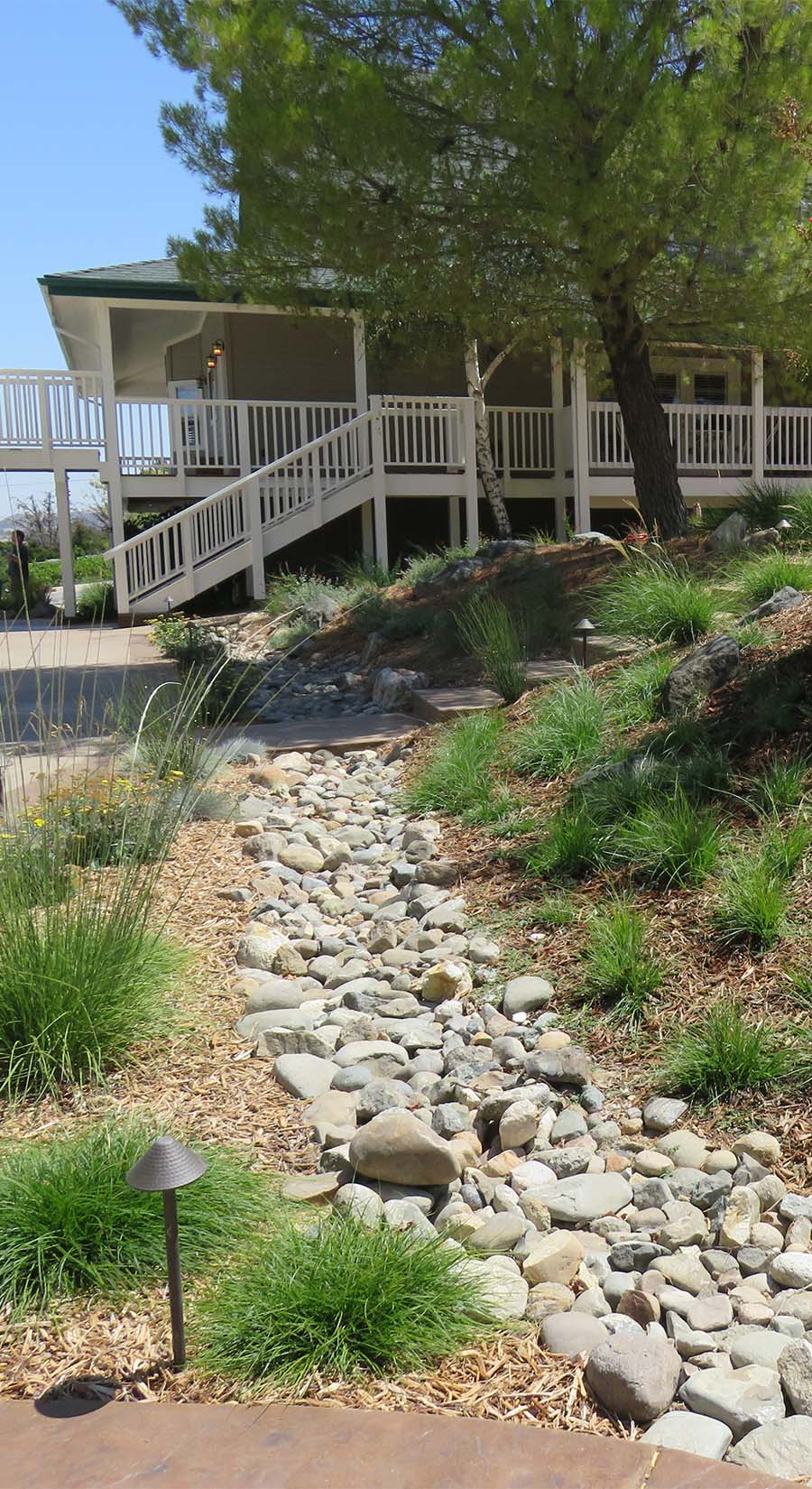








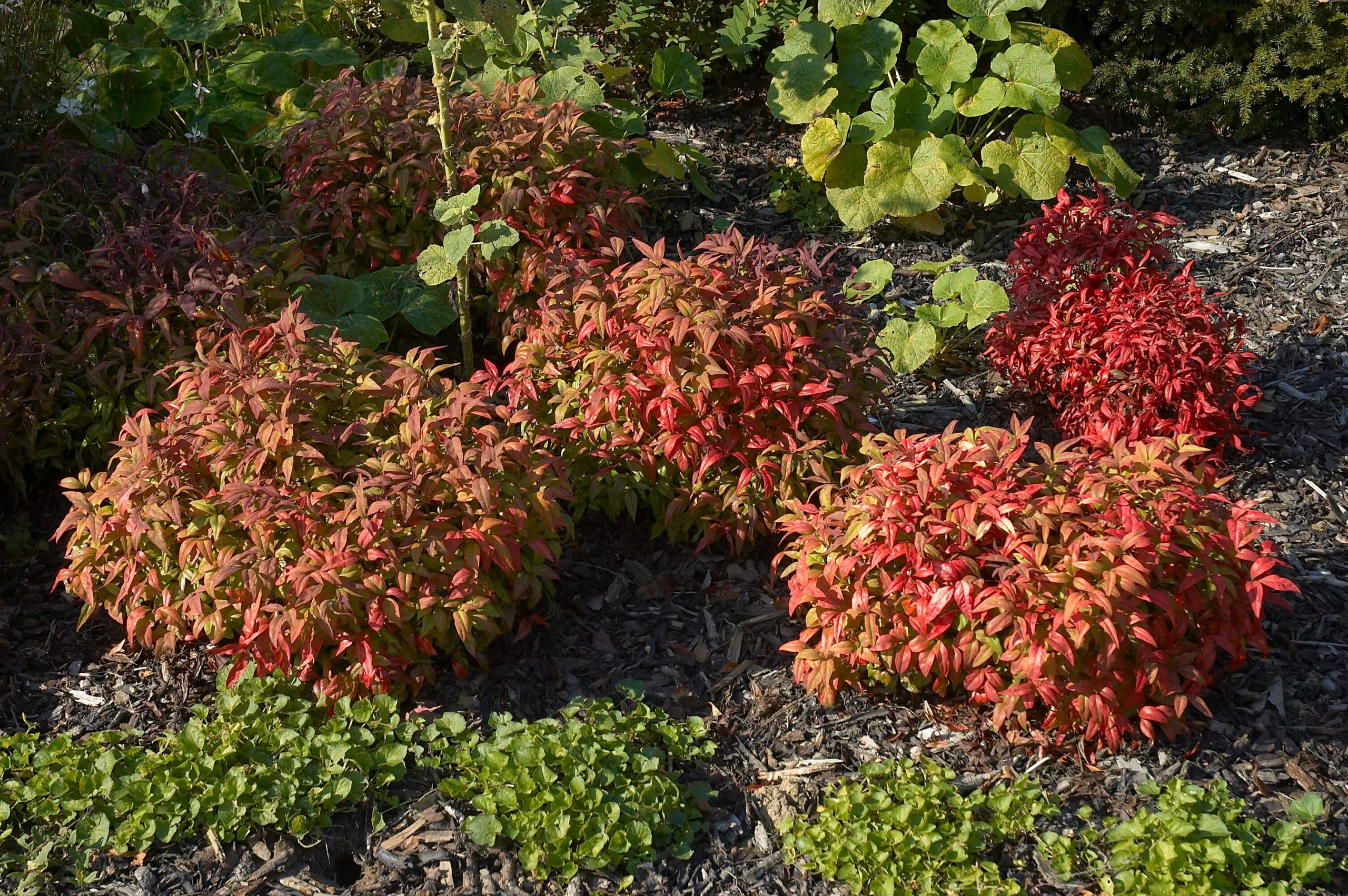
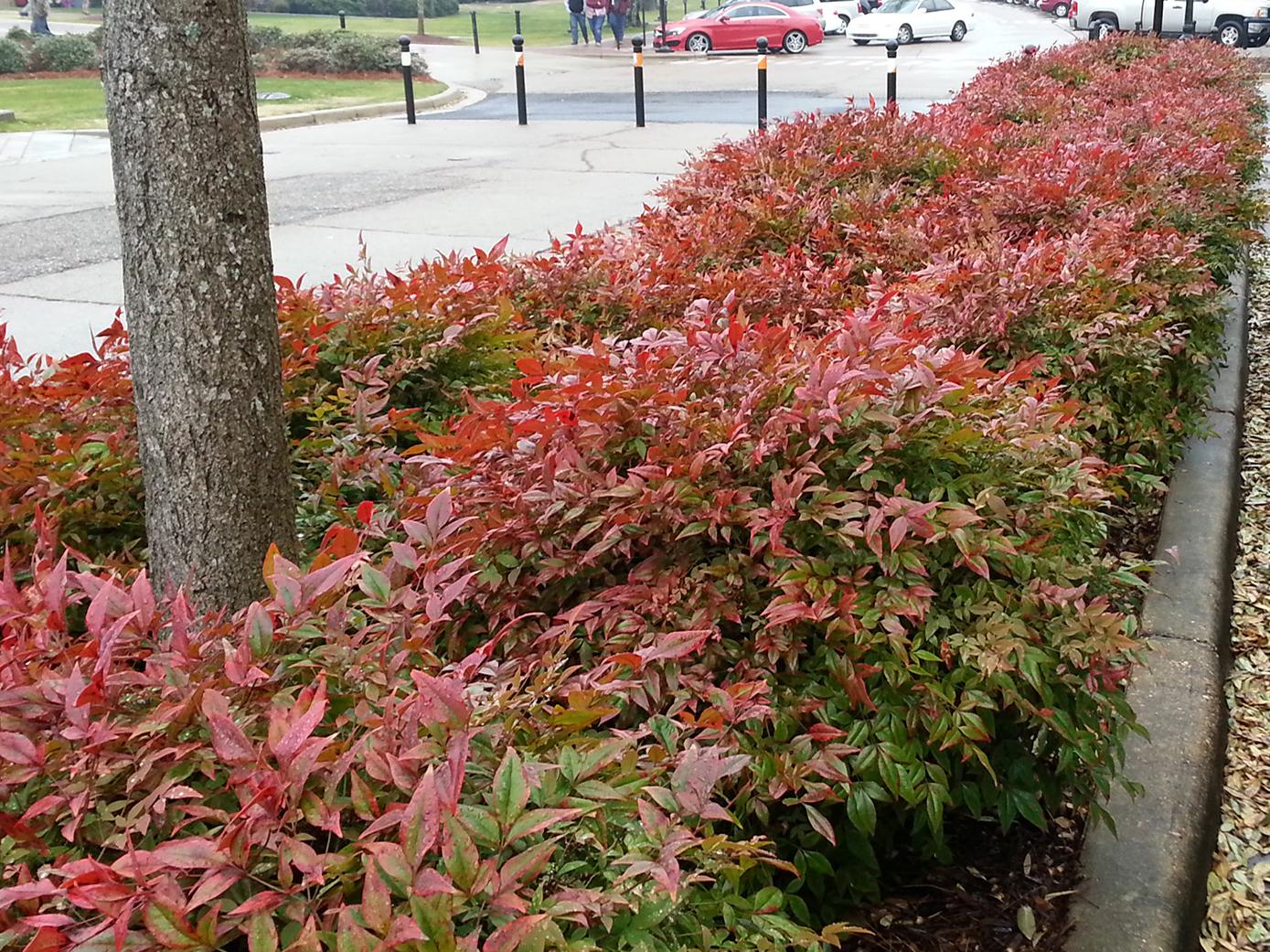
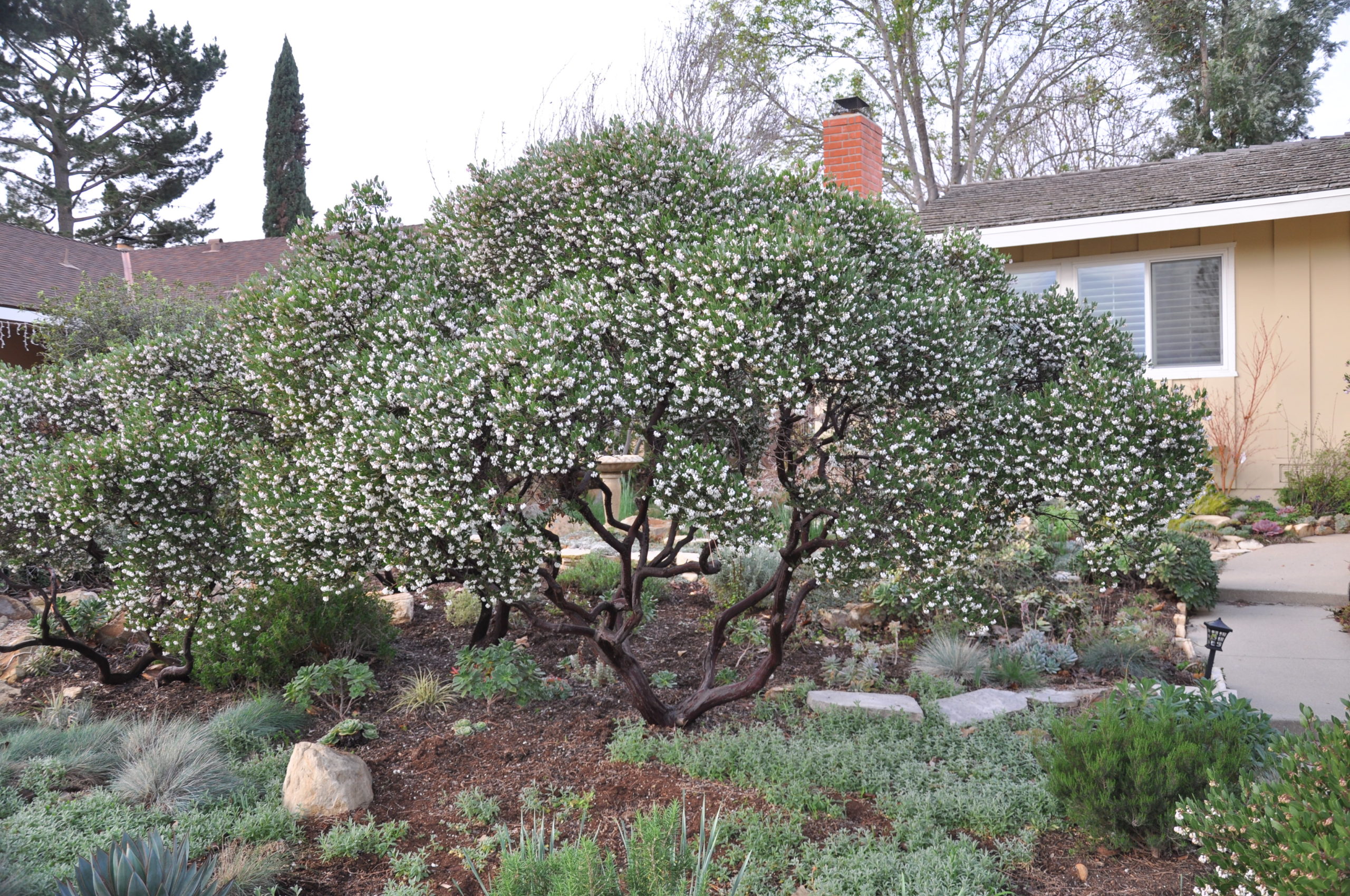
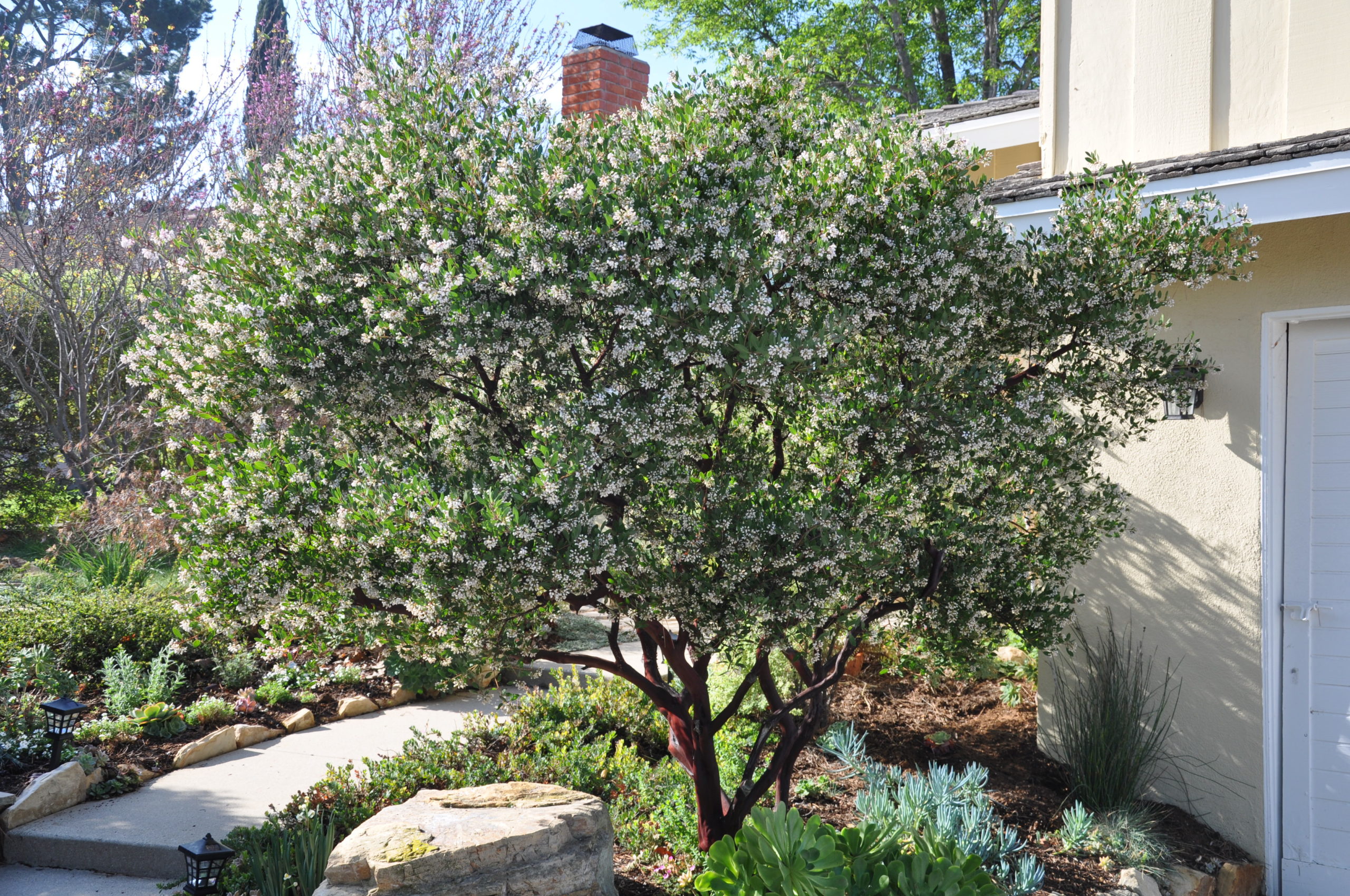

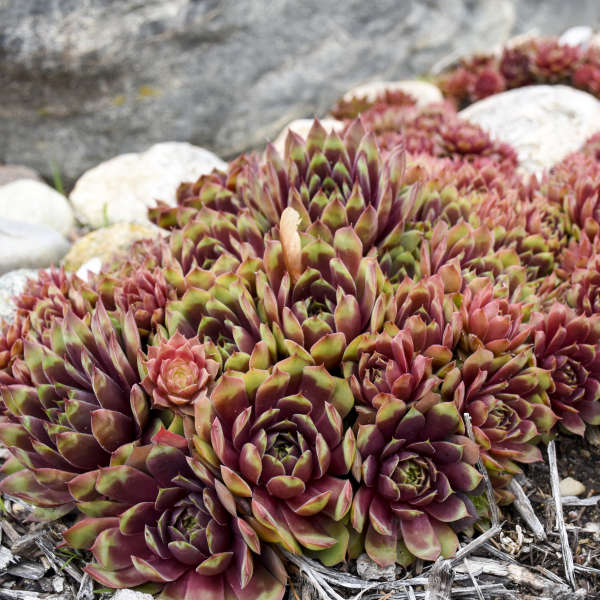

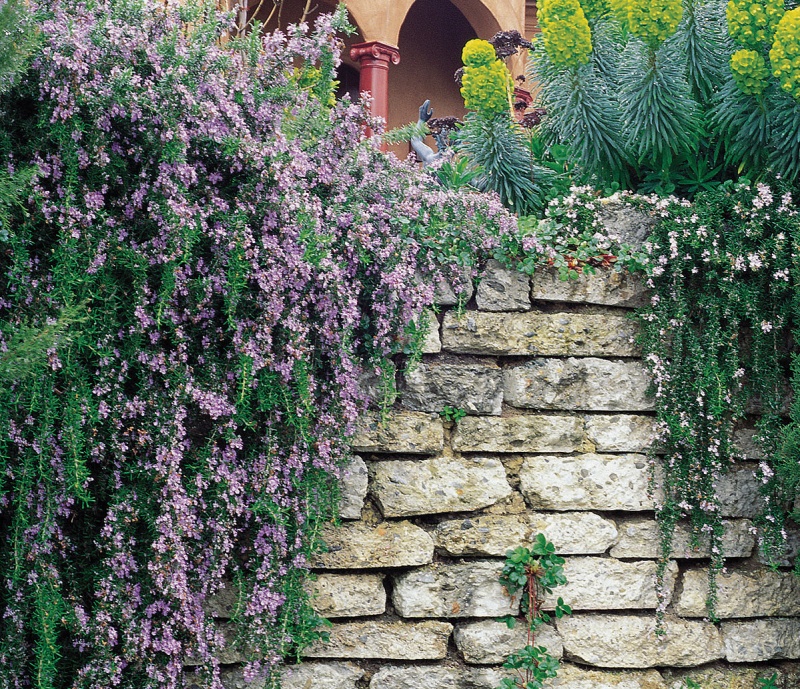




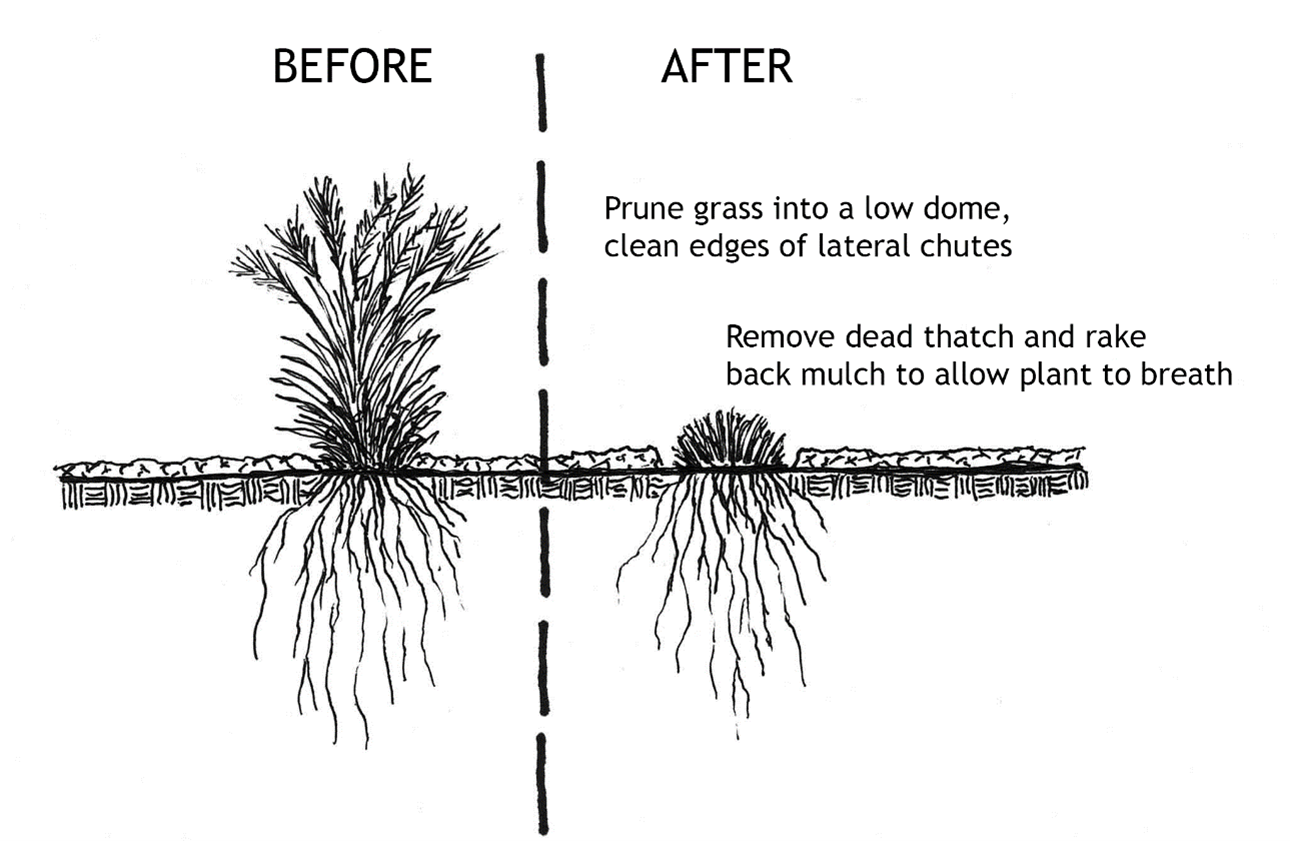
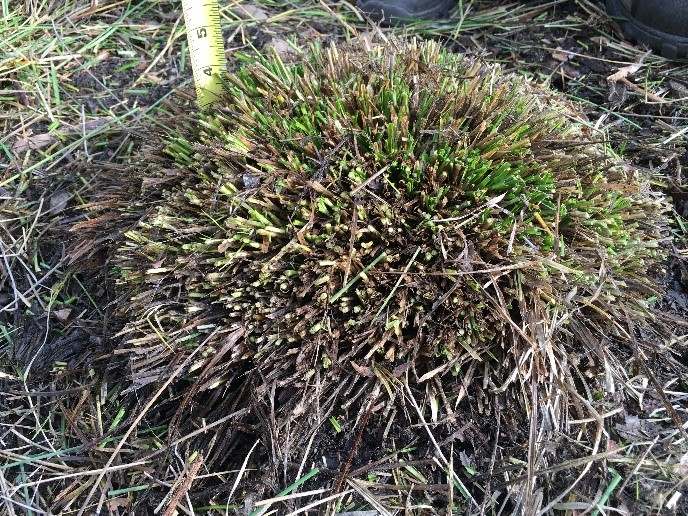
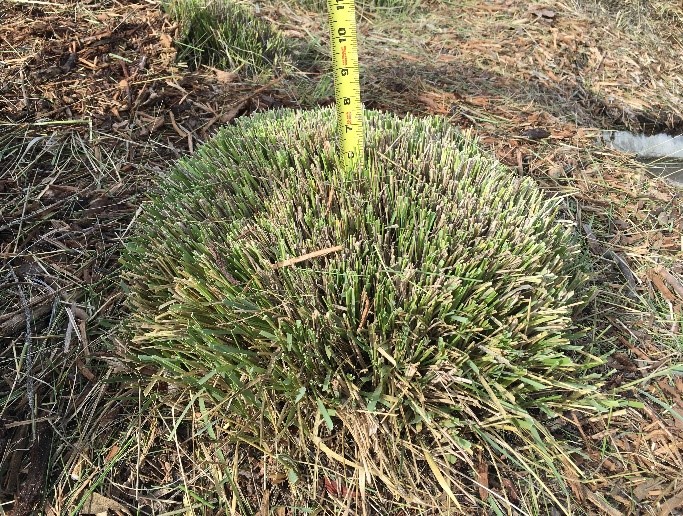











 Enhance Aesthetics
Enhance Aesthetics Choose the Right Mulch Material
Choose the Right Mulch Material
 Determine the Right Amount of Mulch
Determine the Right Amount of Mulch Embrace the Power of Mulch
Embrace the Power of Mulch